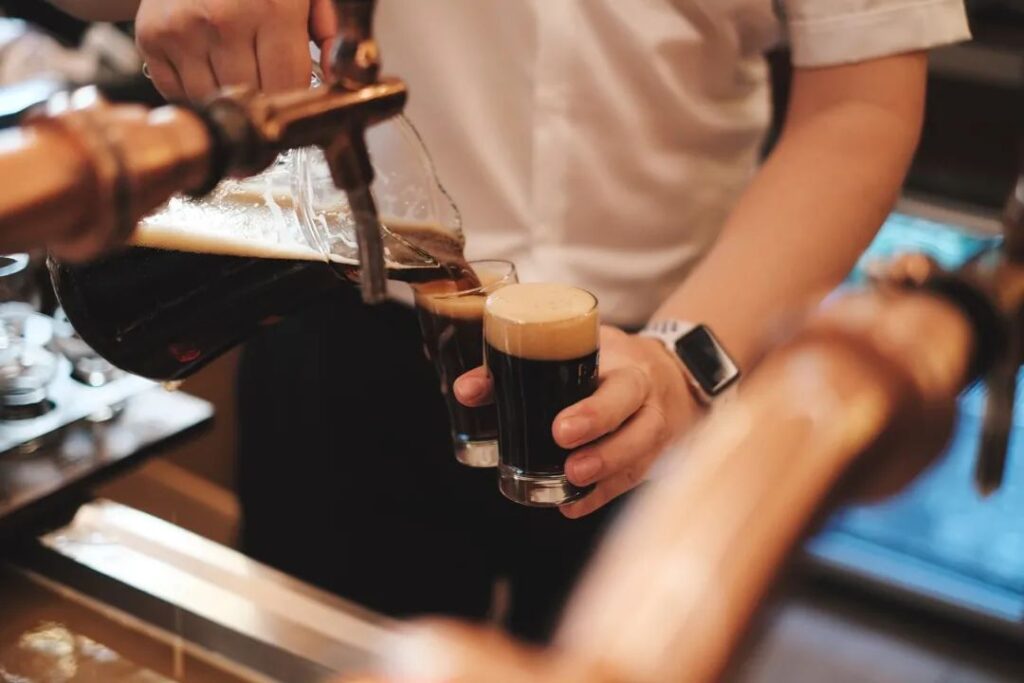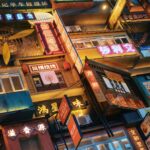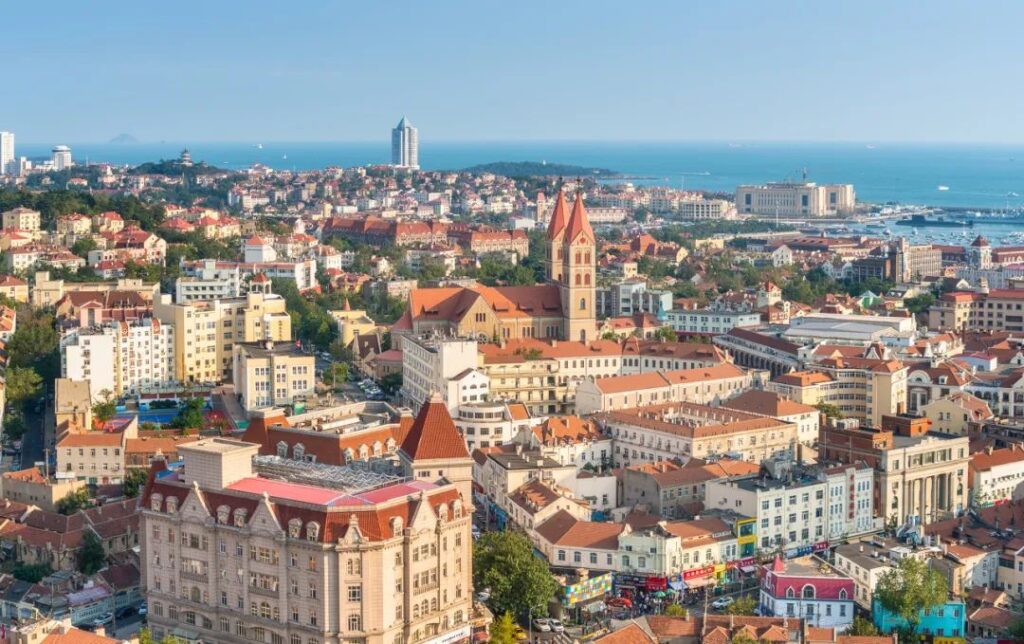
Qingdao, a city where mountains, sea, and urban landscapes harmoniously blend, is renowned for its distinctive charm of “red tiles, green trees, blue sea, and azure sky.” The red-roofed buildings, a legacy of the city’s urban planning during the German occupation, have been preserved, creating a stunning architectural beauty when viewed from high above.

A typical Qingdao itinerary revolves around three main activities: drinking beer (ha pijiu), savoring clams (chi gela), and bathing in seaweed-rich waters (xi haizao). Qingdao Beer, the city’s iconic IP, ranks as the fifth-largest beer manufacturer worldwide and is the leading beer company in China’s A-share market. The Qingdao International Beer Festival, initiated in 1991, has grown into Asia’s largest beer event.
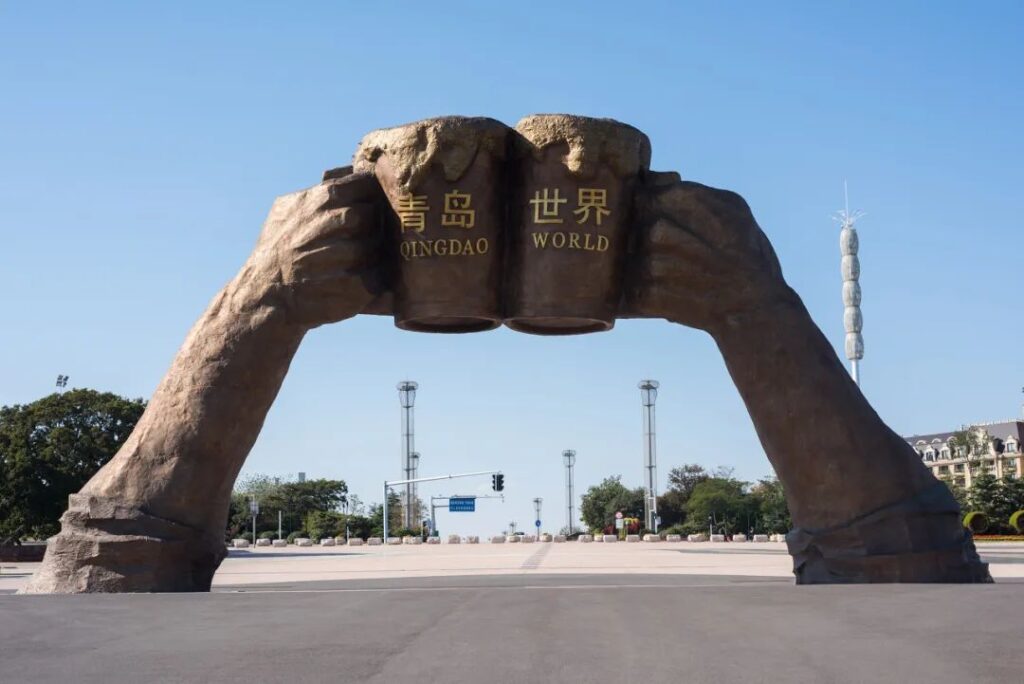
Clams are the most commonly consumed seafood by locals, attesting to the excellent quality of Qingdao’s seafood offerings.
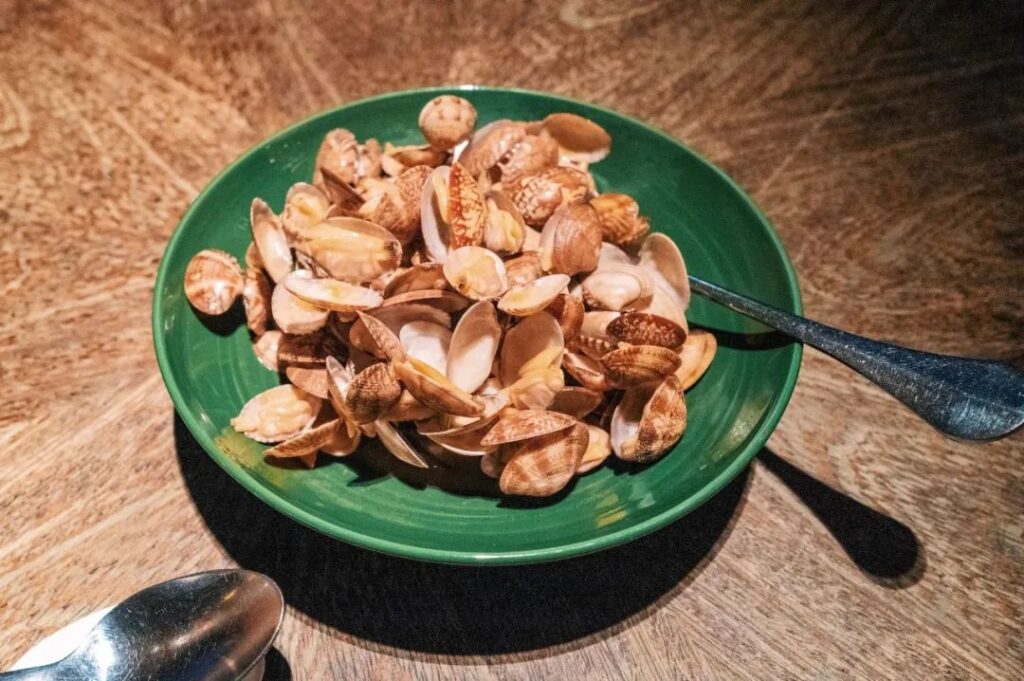
Swimming in Qingdao’s beaches is affectionately termed “washing in seaweed” for reasons well understood by visitors.

Qingdao’s attractions are primarily concentrated within the city, with the exceptions of Golden Sand Beach and Laoshan Scenic Area, which are slightly further away. Two to three days are sufficient to explore the city’s attractions, while Golden Sand Beach and Laoshan each require a full day.
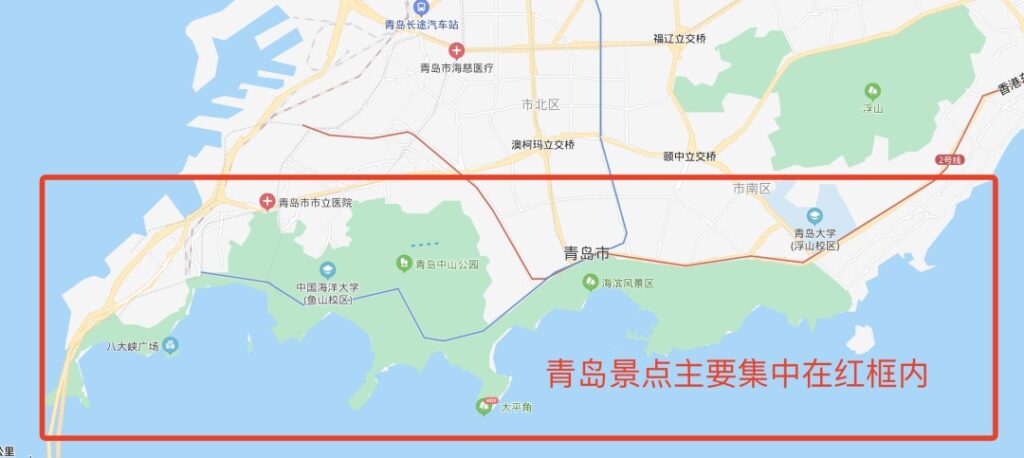
For first-time visitors, must-see attractions include Zhanqiao Pier, Badaguan, Zhongshan Park, Laoshan, May Fourth Square, Olympic Sailing Center, Qingdao Beer Museum, and the Catholic Church. Although these locations tend to be crowded, they are essential to the Qingdao experience.
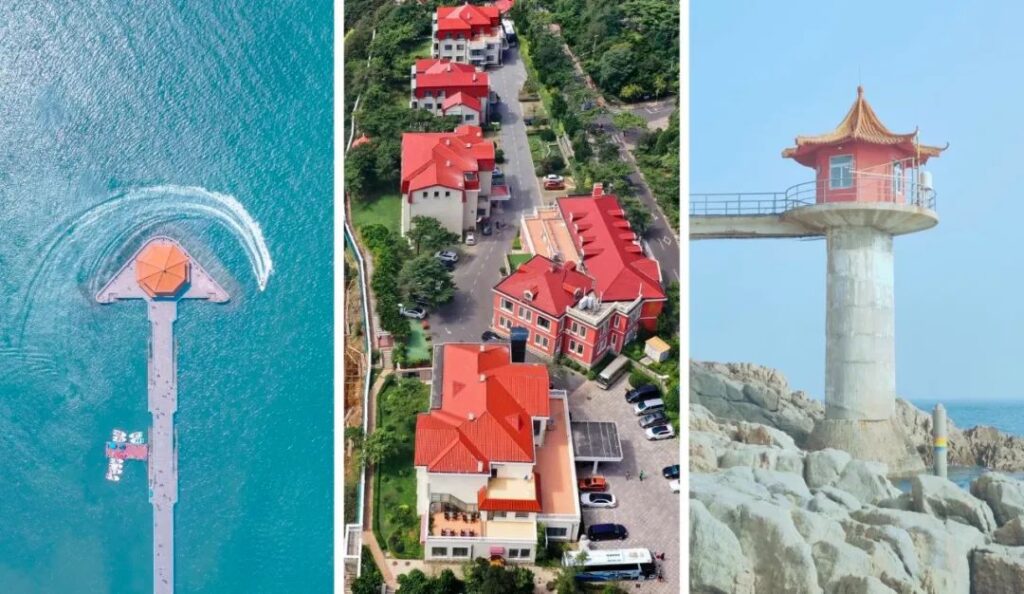
Zhanqiao Pier, an iconic landmark of Qingdao, extends into the sea with Huilan Pavilion at its end. While walking along the pier is a popular activity, the true essence lies in admiring and photographing it from afar.

Badaguan refers to eight streets named after the Great Wall passes, featuring architecture that combines styles from over twenty countries. This area best exemplifies Qingdao’s “red tiles, green trees, blue sea, and azure sky” characteristics and is a favorite among those seeking a picturesque stroll.

The Catholic Church, Qingdao’s largest Gothic-style building and China’s only consecrated church, boasts a striking red-roofed, yellow-walled, brick-and-stone twin-tower structure reminiscent of Prague.

May Fourth Square and the Olympic Sailing Center are adjacent to each other. Although the May Fourth Movement began in Beijing, its spark originated in Qingdao on May 3, 1919, when Peking University student Xie Shaomin first shouted, “Return Qingdao to me!” May Fourth Square, the heart of Qingdao, features light and fountain shows, with the light show starting at 8 PM (May-October).
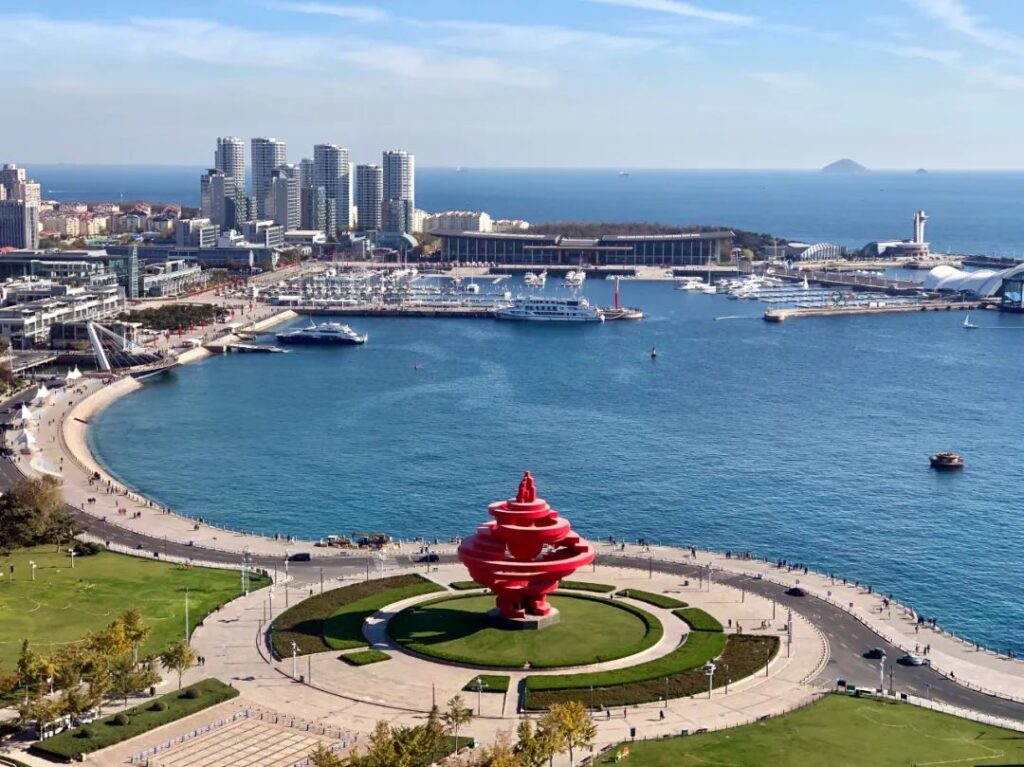
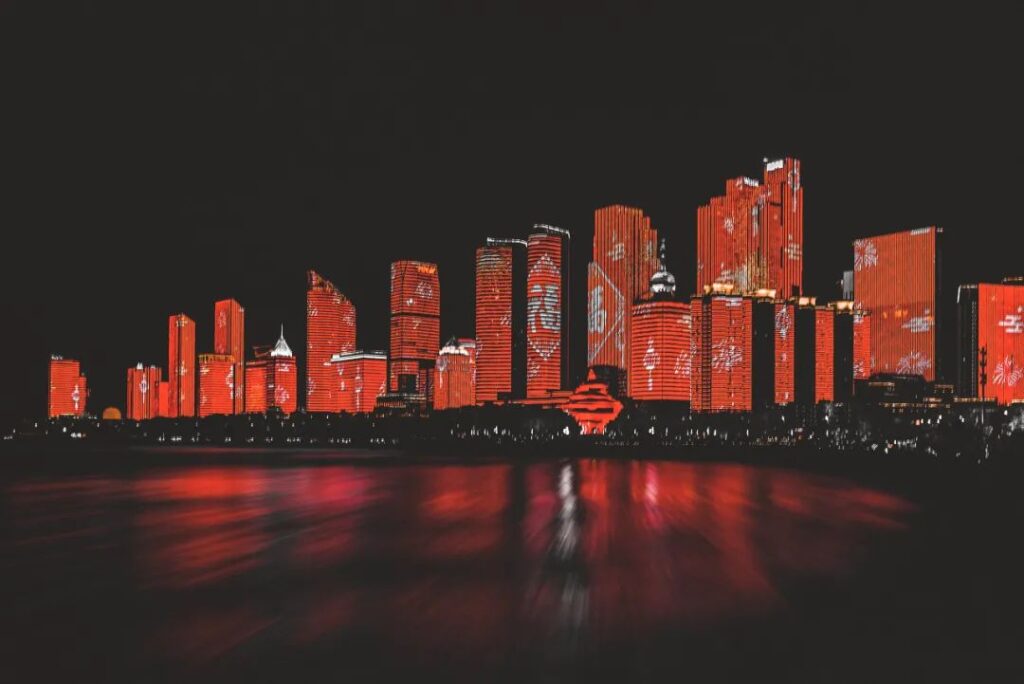
The Olympic Sailing Center, situated next to May Fourth Square, showcases Qingdao’s status as a sailing capital, with the city center’s sea surface serving as a sailing venue. The center’s beauty is particularly evident at night, with glittering lights and shimmering waves.
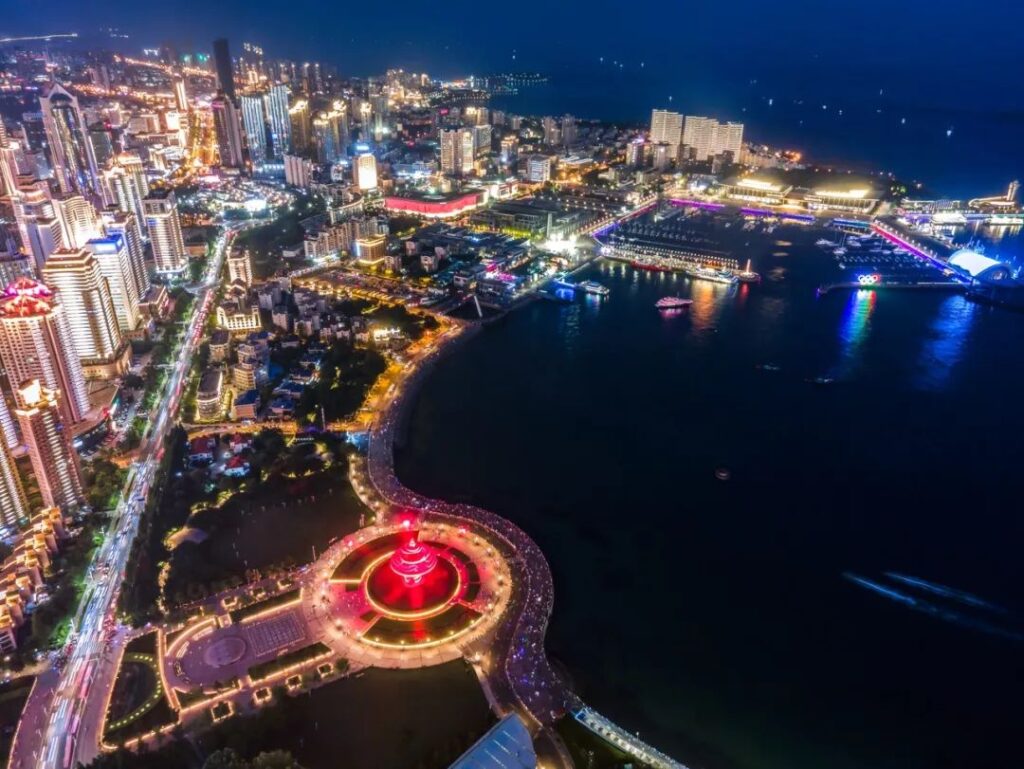
Directly opposite the Olympic Sailing Center lies Lovers’ Pier, which, along with the White Lighthouse, is regarded as the best spot in Qingdao to watch the sunset.
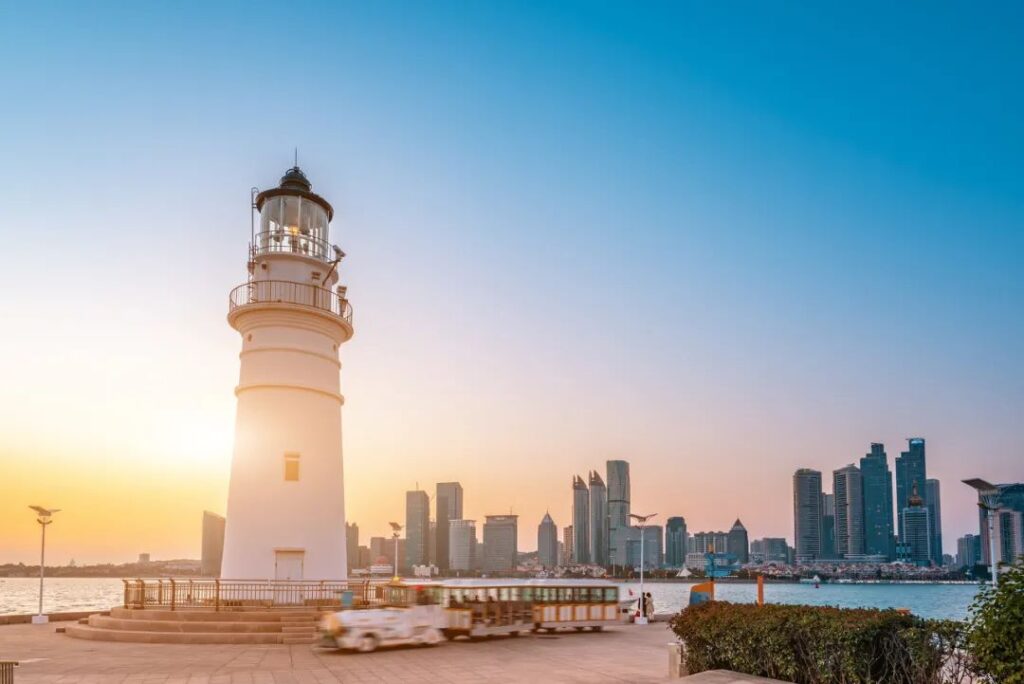
The Qingdao Beer Museum, the world’s only beer-themed museum, chronicles the legendary company’s ups and downs, offering visitors a comprehensive understanding of Qingdao’s transformation into a beer city.
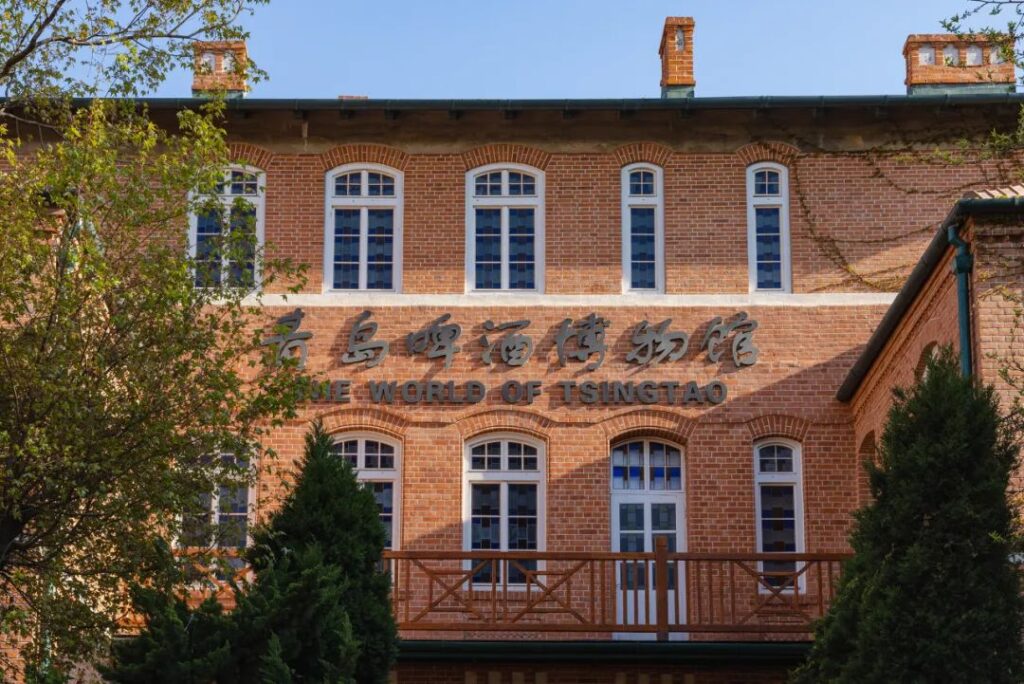
Divided into A, B, and C zones, the museum takes 1-2 hours to explore, culminating in a tasting session at the 1903 bar in Zone C.

Zone B concludes with a complimentary glass of the freshest, purest Qingdao No. 1 Factory draft beer, surpassing even craft beer in taste and smoothness.
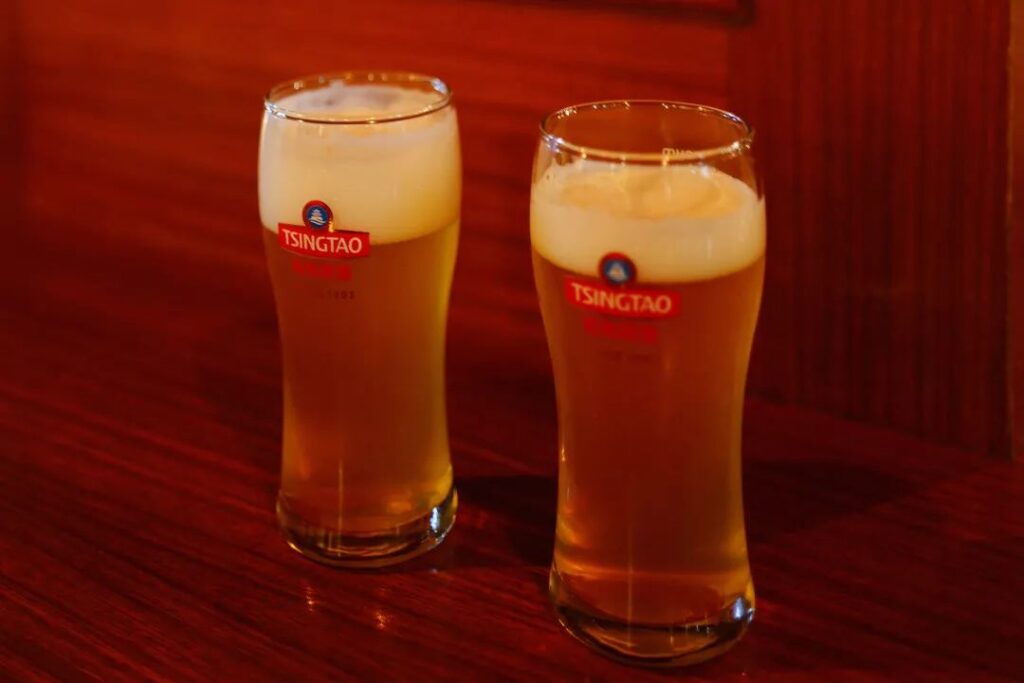
While the standard ticket costs 60 yuan, the 95-yuan tasting ticket, which includes eight glasses of beer, is highly recommended for a complete experience that feels more like a drinking spree than a museum visit.
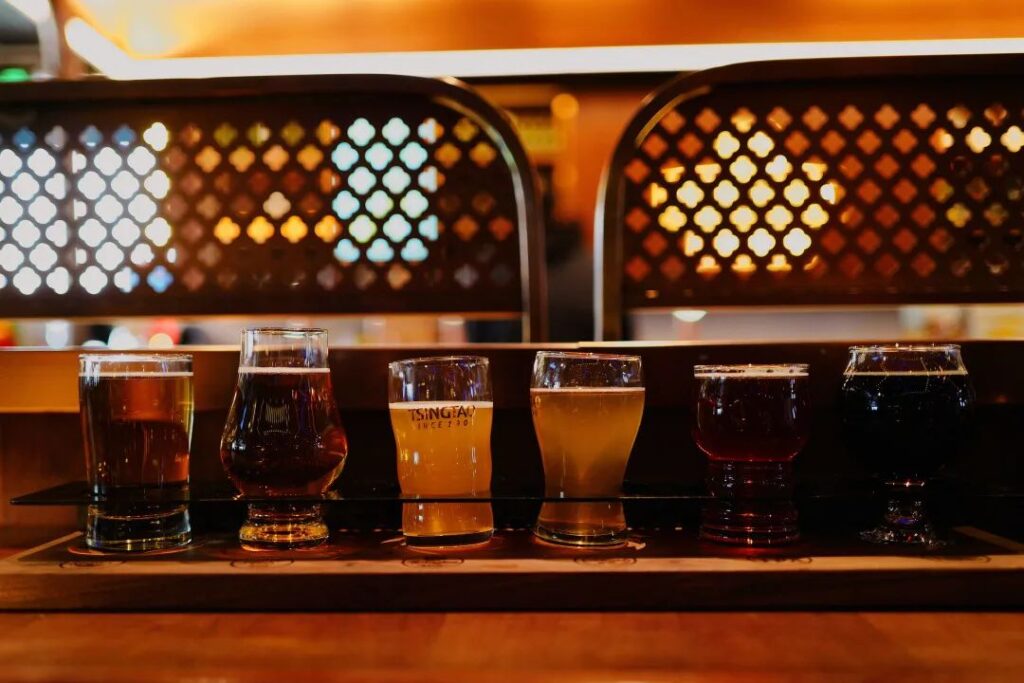
Laoshan is a must-visit for first-time travelers to Qingdao, offering the opportunity to simultaneously appreciate the grandeur of the mountains and the vastness of the sea. Rather than referring to a single mountain, Laoshan encompasses an entire region.

deally, two days should be allocated to explore Laoshan. However, for those pressed for time, a one-day tour focusing on the southern route is optimal: visiting Yangkou Scenic Area in the morning, Taiqing Scenic Area in the afternoon, and enjoying lunch at Qingshan Fishing Village while skipping Chessboard Rock.
The Yangkou cable car is a must-ride, featuring partially open carriages that provide a thrilling experience. The cable car offers spectacular views of the seamless blend of sea and sky.
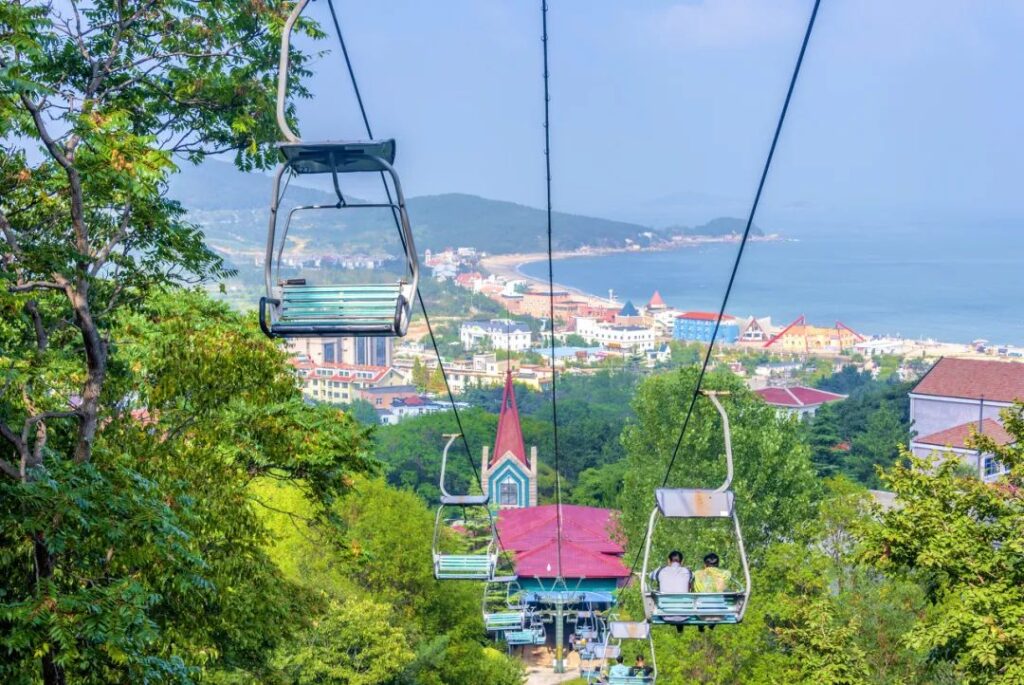
Qingshan Fishing Village is another essential stop, yet another place that evokes the feeling of being in Europe.

For those who frequently visit Qingdao, exploring additional locations is recommended.
Elevated Vantage Points for Panoramic Views of Qingdao
As mentioned earlier, Qingdao is characterized by its red tiles, green trees, blue sea, and azure sky. Therefore, the best perspective to appreciate Qingdao’s beauty is from above. Several locations offer panoramic views of the city:
Signal Hill, standing at a modest 98 meters, is the highest point in Qingdao. From here, visitors can admire the endless expanse of the sea in the distance and the orderly rows of red-roofed Western-style houses in the foreground.

Xiaoyu Hill Park provides a distant view of Qingdao’s coastline and the old town’s scenery, with red tiles and green trees filling the vista. It is recommended to visit during sunset to enjoy the golden glow.
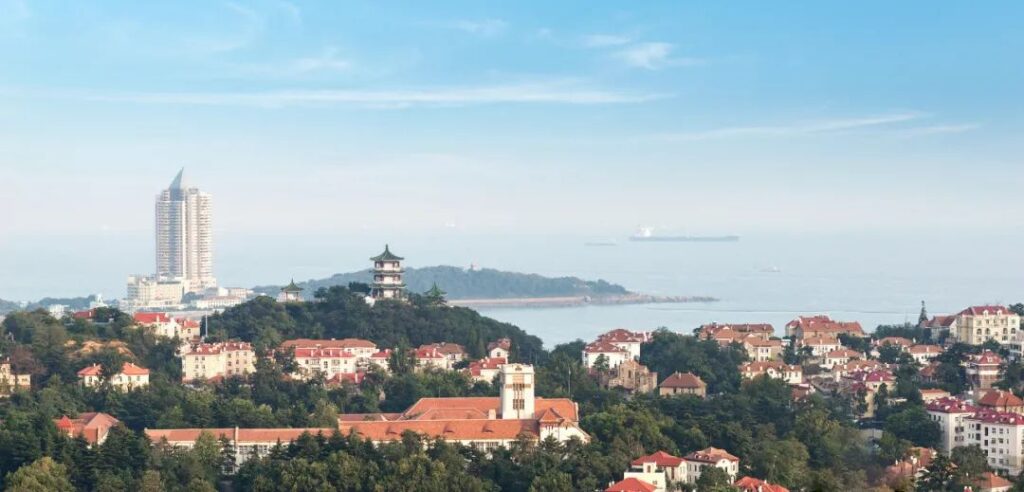
Additionally, Yushan Road, a small path built along the southern foot of Xiaoyu Hill, is one of the most artistic streets in Qingdao. Along with nearby Fushan Branch Road and Daxue Road, it is known as the “Cultural Celebrity Former Residence Street.” Visitors are encouraged to explore the former residences of notable figures.
The Qingdao Art Museum is also located here, surrounded by numerous cafes.

While Signal Hill and Xiaoyu Hill offer stunning views, they pale in comparison to the vantage point from the Qingdao St. Regis Hotel.
Staying at the St. Regis eliminates the need to climb hills while providing unparalleled views of the cityscape.
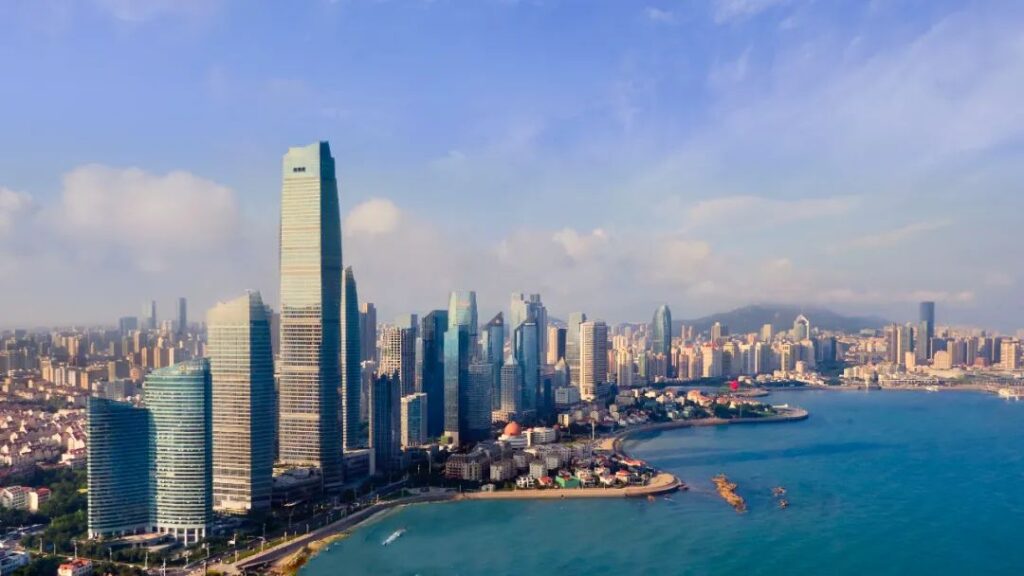
Male visitors will undoubtedly enjoy the Naval Museum, which features three decommissioned naval vessels open for exploration.
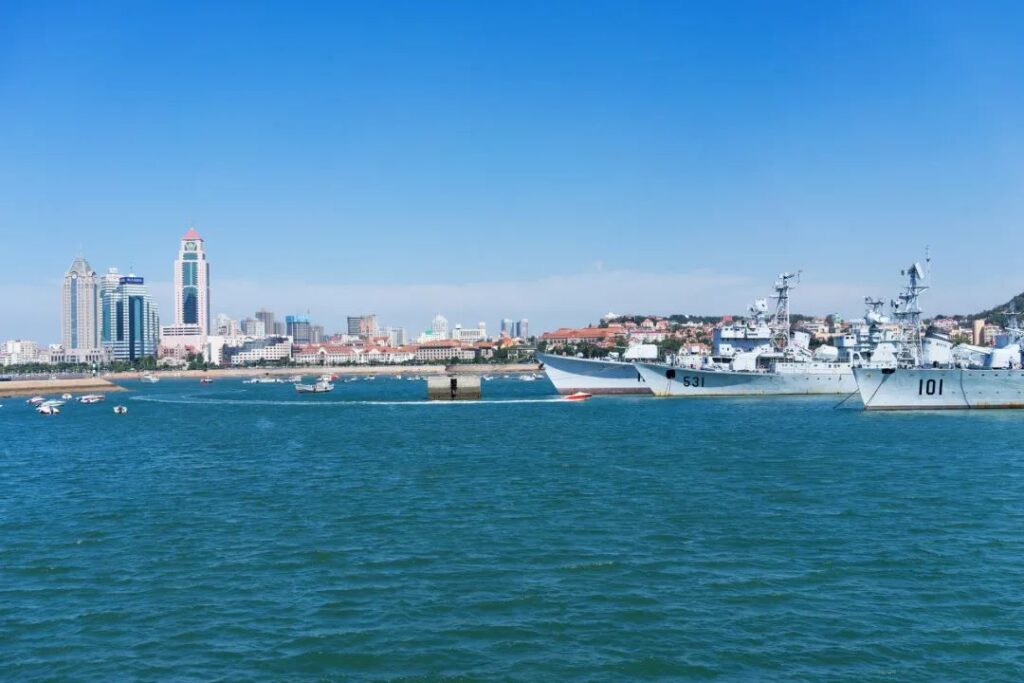
Literary enthusiasts can visit the Qingdao Post and Telecommunications Museum, where they can send themselves a “slow mail” postcard with a maximum delivery time of 50 years, embodying a sense of artistry and sentimentality.
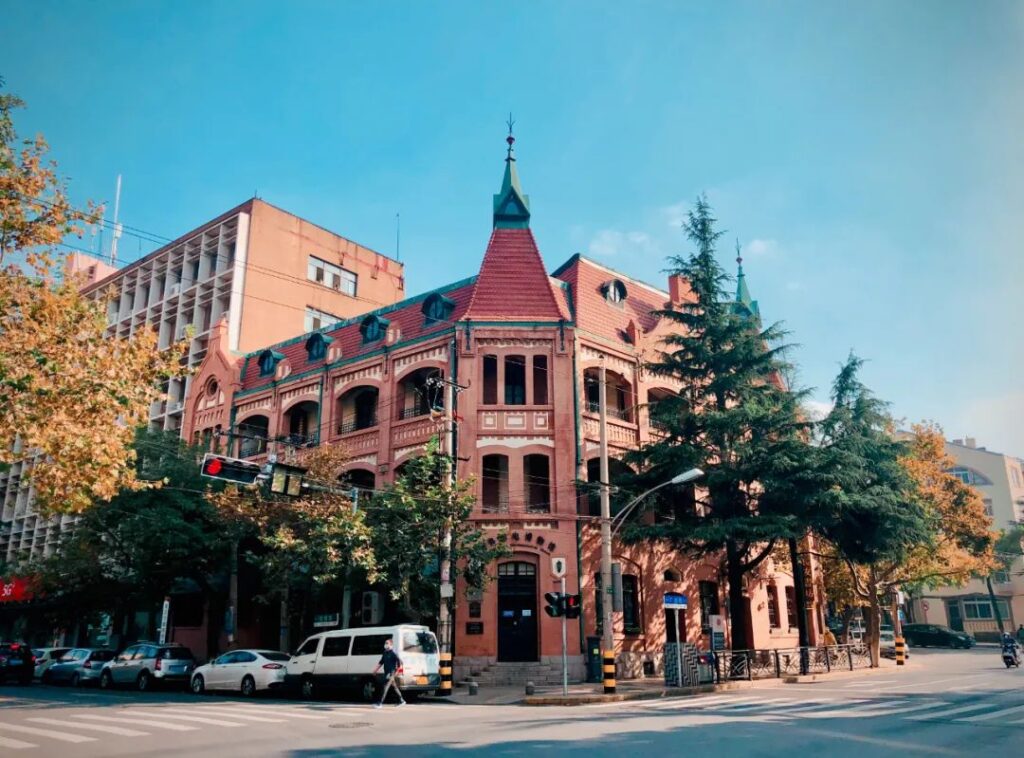
The seaside Rushi Bookstore is another noteworthy destination, offering both stunning views and a commendable selection of books.Qingdao boasts numerous artistic bookstores, including Liangyou Bookstore (Tower 1901 Branch), Laoshan Bookstore, and Fangsuo Bookstore (China Resources Mixc City Branch), all of which are worth visiting.
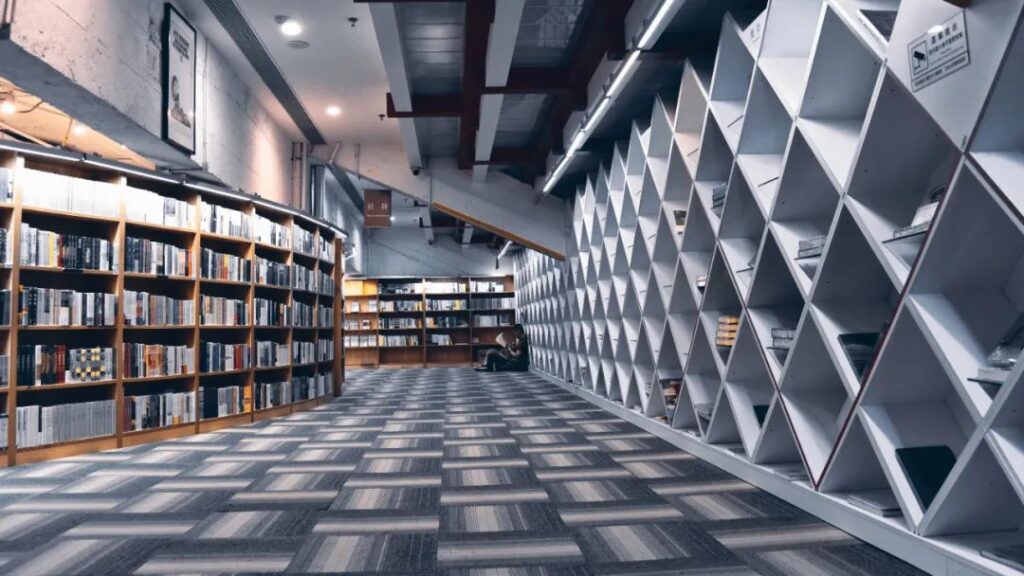
Qingdao Railway Station is also considered one of the most artistic train stations in China. Visitors are advised to travel to Qingdao by high-speed rail, preferably purchasing tickets to Qingdao Station. This allows for both an appreciation of the artistic station and convenient access to the city center.
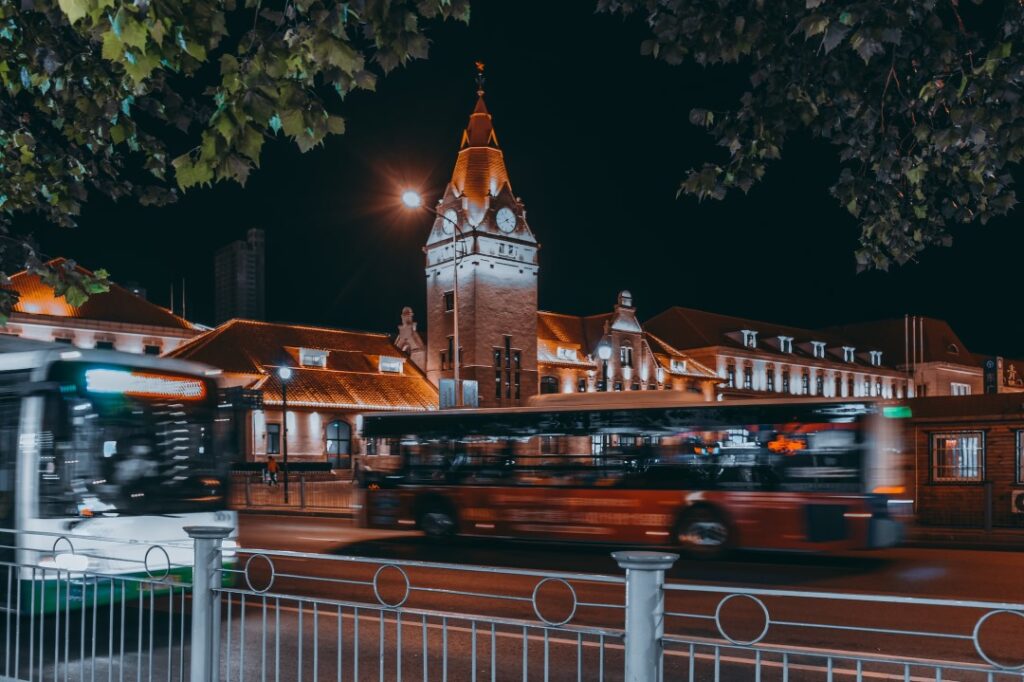
Photography enthusiasts should visit Xiaomaidao, which consistently tops the list of the most popular parks in Qingdao on social media, offering a secluded beach and hills.

Yanerdao Park is another lesser-known destination, featuring rugged reefs and winding wooden boardwalks.
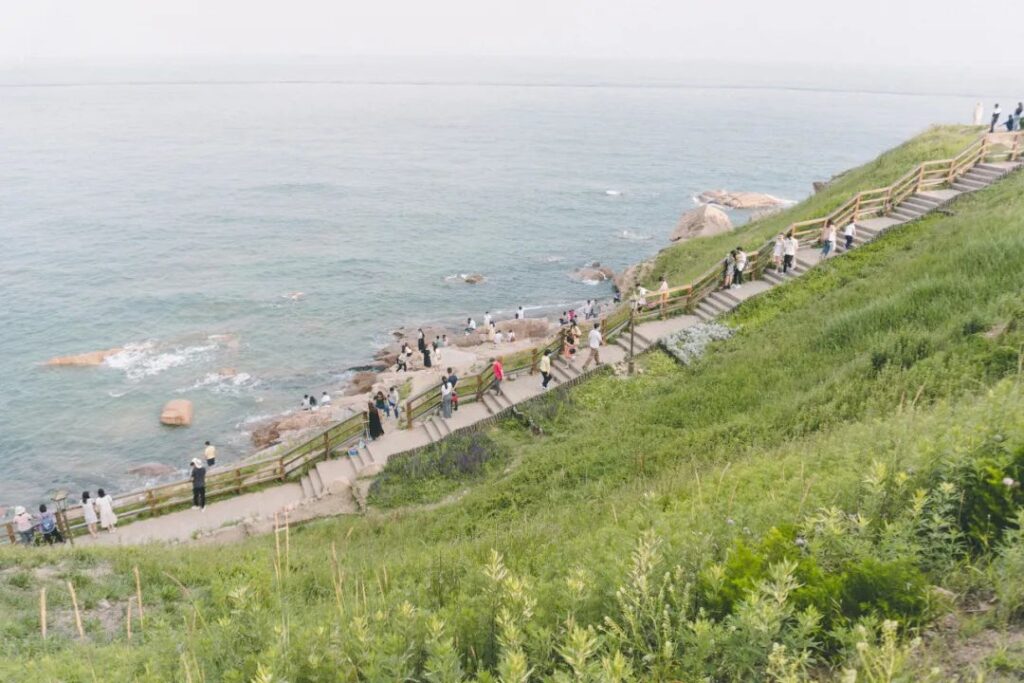
Those who enjoy visiting markets can explore Buxi Market, one of the largest seafood markets in Qingdao, offering hundreds of varieties of seafood. Purchasing from the market and having the seafood prepared at nearby processing facilities is a cost-effective option.
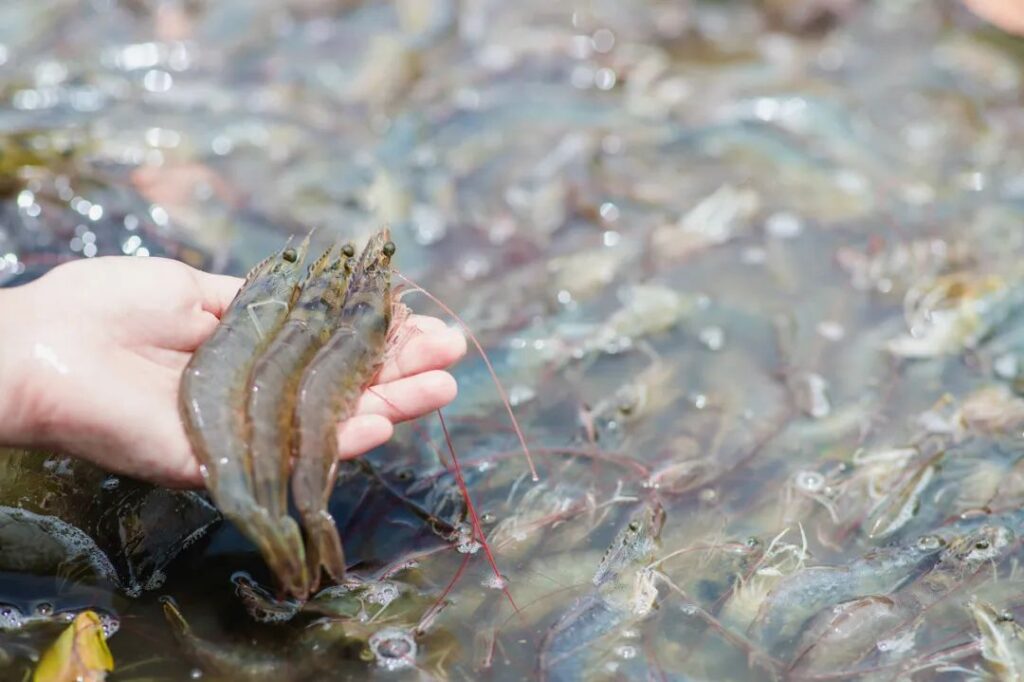
For those looking to enjoy the beach, Jinsha Beach is recommended. With its fine sand, beautiful scenery, and expansive area, the only drawback is its distance from the city, requiring a full day’s visit.
Of course, the several seaside bathing beaches within the city are also excellent options.
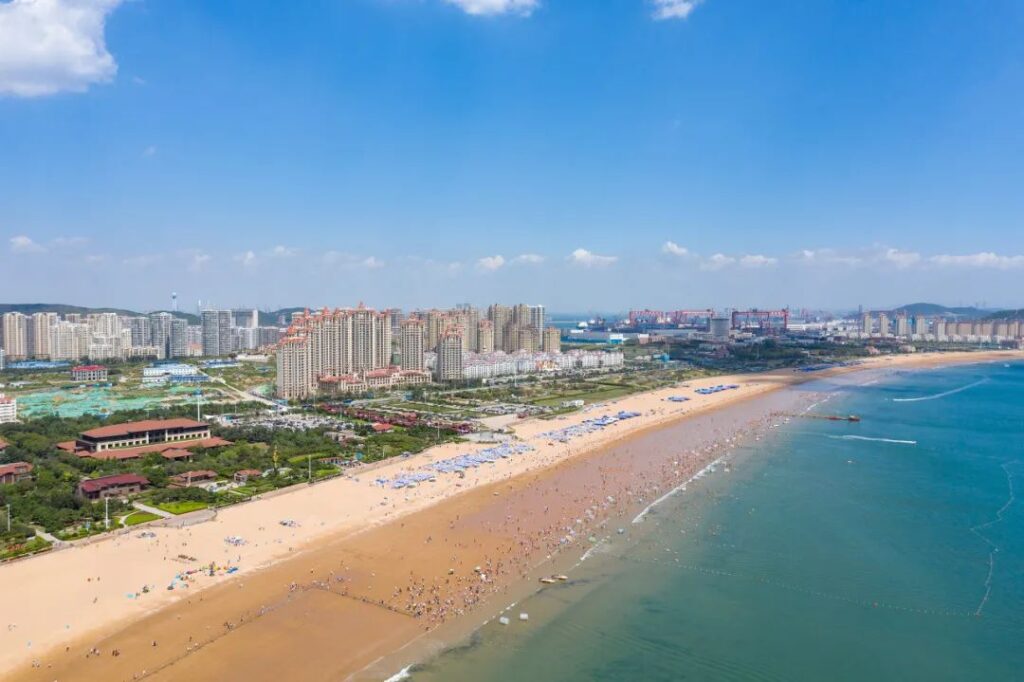
Qingdao Cuisine
Located on the Shandong Peninsula, Qingdao primarily offers Lu cuisine, with seafood being a specialty of the region. Qingdao Beer, of course, needs no introduction.
Without having sipped beer from a plastic bag, one cannot claim to have truly visited Qingdao.
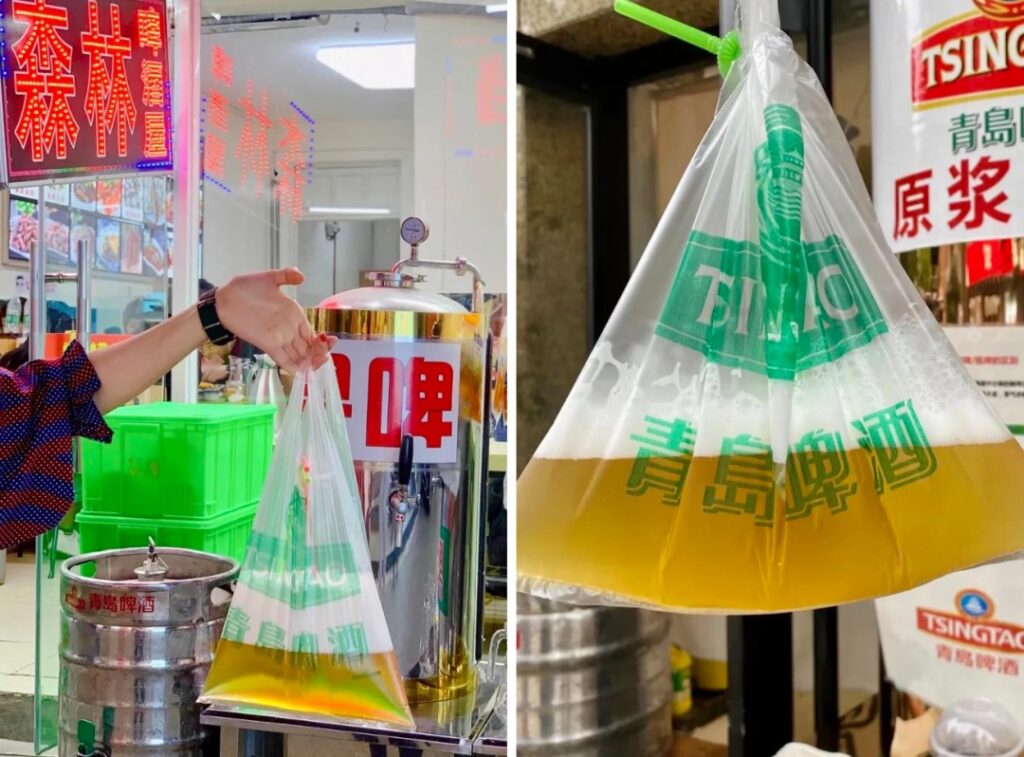
In addition to beer, three must-try “dark” beverages include Laoshan Baihua Shecao Water, Laoshan Cola, and Laoshan Soda, all of which can be purchased at major supermarkets.

Seafood is also a must-eat, with Qingdao’s jumbo shrimp, as large as a mobile phone, being a rarity in other regions. (Please excuse the slightly dirty phone screen in the image.)
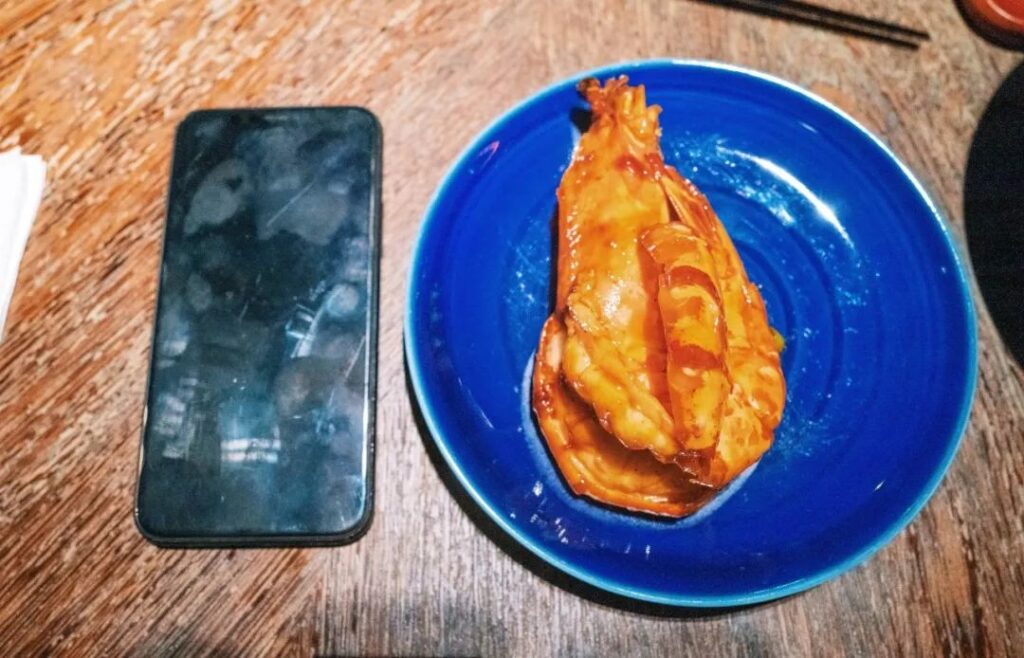
In the northern coastal regions, the natural flavor of ingredients is highly valued, with soy sauce and other condiments considered inferior to the natural taste of freshly boiled seafood. Cold-water seafood, which has a longer growing period, is seen as a waste of nature’s gifts when overly seasoned.
For those who prefer plain boiled or steamed preparations, it is highly recommended to purchase seafood directly from the market and prepare it yourself. The process is simple, and the result is fresh and delicious, with a budget of less than 100 yuan allowing for a satisfying meal.
Oysters are priced at 8 yuan per jin (500 grams), grouper at 18 yuan per jin, flatfish at 20 yuan per jin, and scallops at 15 yuan for two jin, allowing for generous purchases.


Alternatively, personally experiencing offshore fishing alongside local fishermen and then cooking the catch is another excellent option.
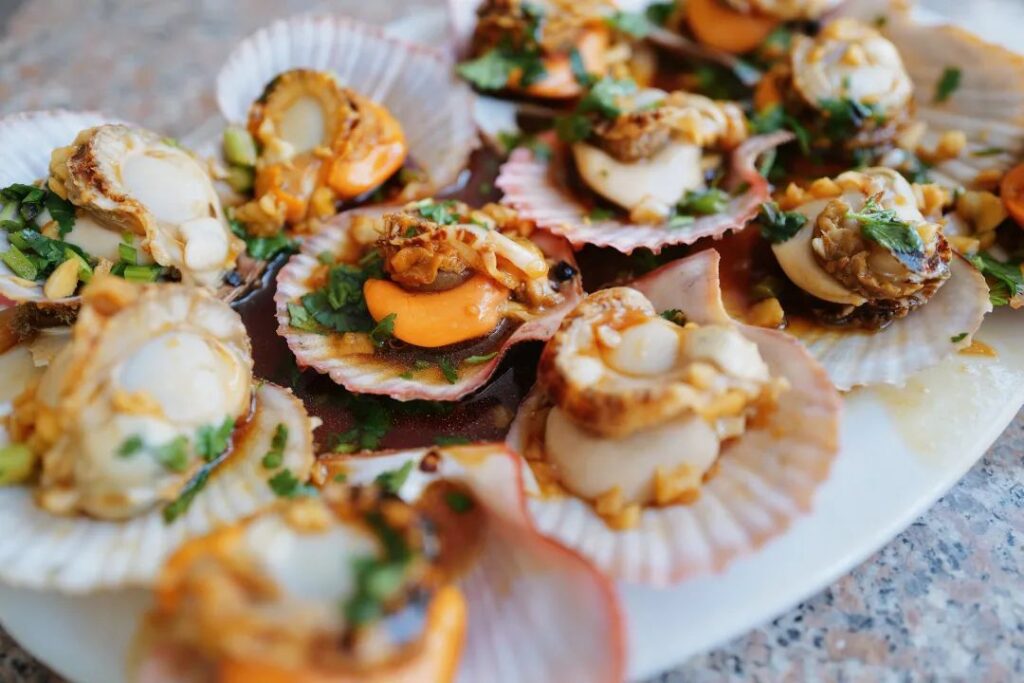
In the north, dumplings reign supreme, and in Qingdao, any type of seafood can be made into dumplings.
The dumplings we encountered in Qingdao featured non-white wrappers. Yellow wrappers indicated yellow croaker dumplings, black wrappers signified cuttlefish, green wrappers denoted pomfret, and white wrappers represented a trio of seafood fillings. The wrappers were chewy and elastic, while the fillings exuded the natural freshness of the fish.
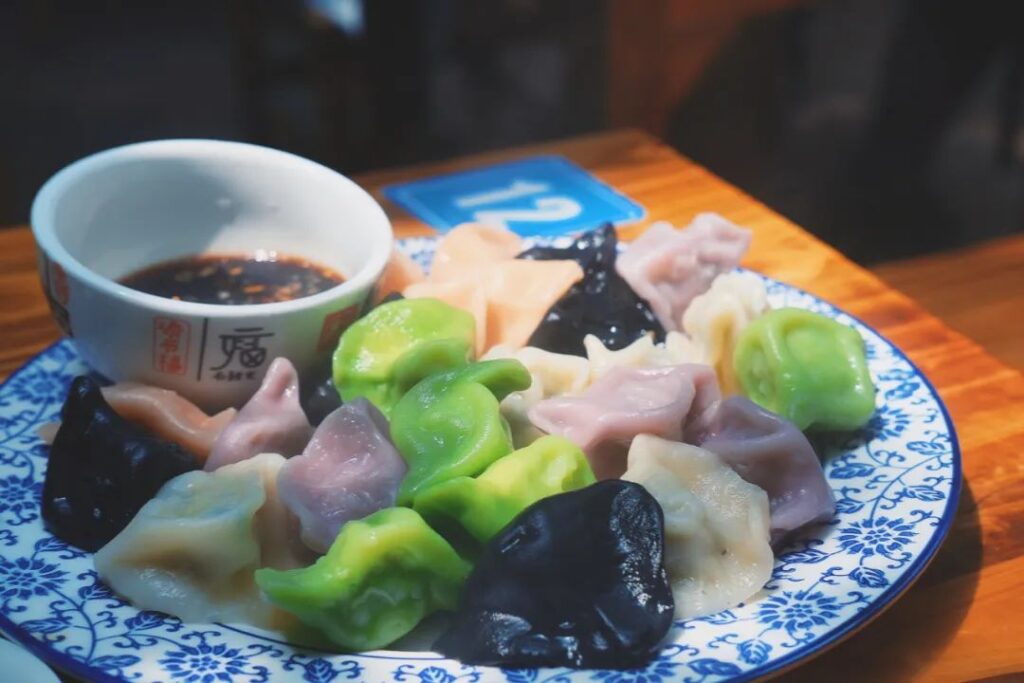
To find the best seafood restaurants in Qingdao, observe which establishments have the most cars with Shandong license plates (beginning with “鲁B”) parked outside, indicating their reliability.
Additionally, Donghai 88 is a genuinely dependable choice, with prices that seem almost too good to be true when combined with meal cards.
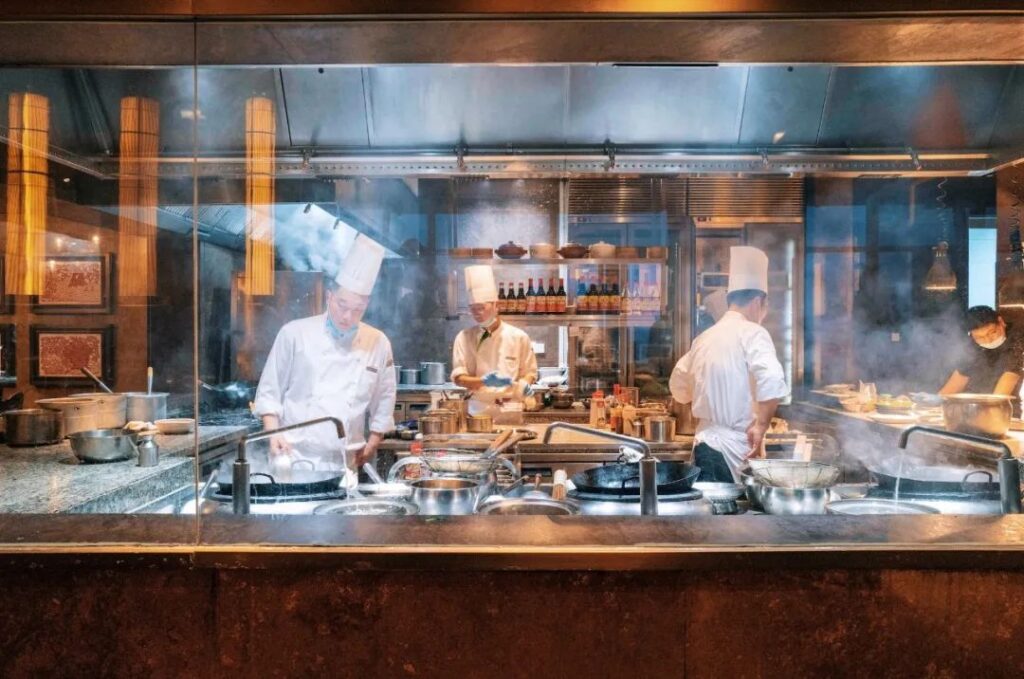
Moreover, Korean cuisine in Qingdao is also worth trying.
Many Koreans reside in Qingdao for work or trade purposes. Before the pandemic, Qingdao had the highest number of flights to South Korea among Chinese cities.
Qingdao is home to over 100,000 Koreans. Naturally, for many Koreans who need to work and make a living in a foreign country for an extended period, satisfying their stomachs is essential for them to work happily!

So, how can one find the best Korean cuisine in Qingdao?
The answer is simple: go to the areas where Koreans live. Qingdao has three major Korean communities: Laoshan in Shinan District, Chengyang District, and Licang District. It’s common to find a Korean restaurant every few steps in these areas, and the taste is generally good.
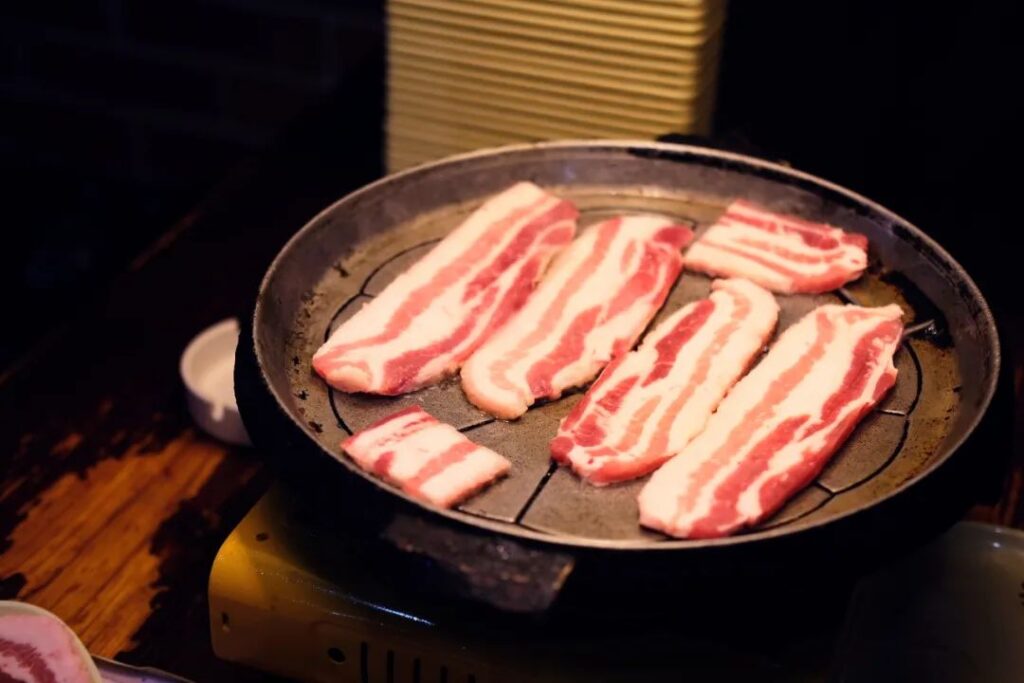
What is the best season to visit Qingdao?
I recommend visiting Qingdao from April to June when the weather is neither too cold nor too hot. You can enjoy cherry blossoms, cherries, and warm sunshine during this period. September to November is also a good time, with pleasant weather and delicious seafood.
Although July and August are peak seasons, it can be too hot. Moreover, hotel prices in Qingdao skyrocket during these months.
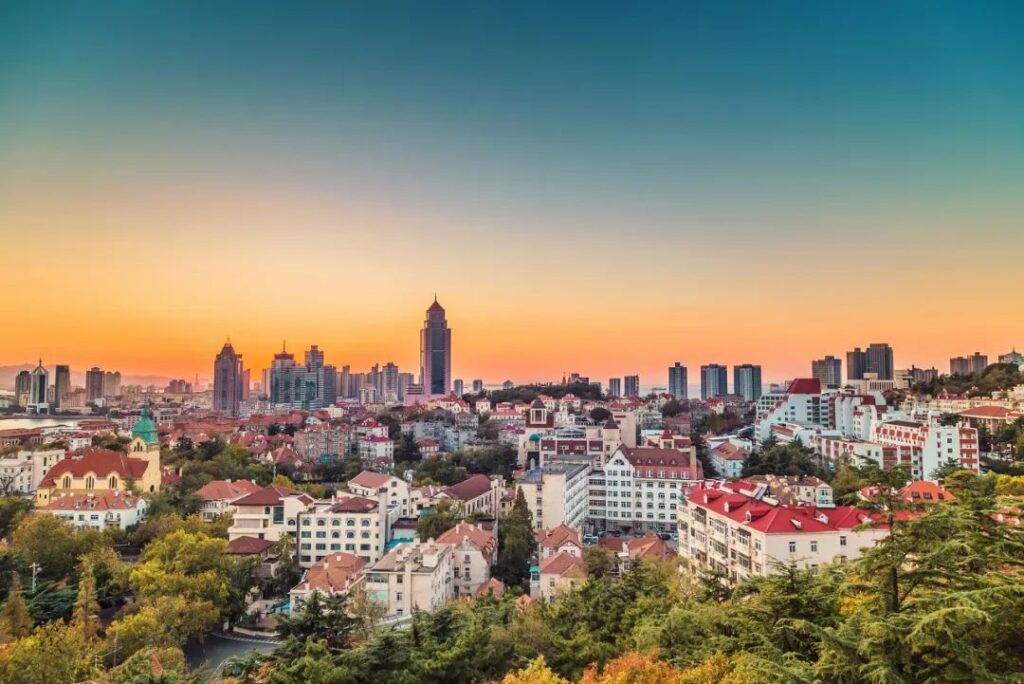
In December, January, and February, seagulls from Siberia visit Qingdao. During winter, you can peacefully feed the seagulls at May Fourth Square.
Additionally, sunrises during this period are beautiful, and you can witness them almost every day.

If you want to see flowers in Qingdao:
In April, you can find cherry blossoms (recommended spots: Ocean University of China and Sanming South Road) and begonia (recommended spots: Ningwuguan Road and Qingdao University). In May, there are roses; in June, there are wheat harvest flowers; in August, there are lotuses; and in November, the autumn leaves turn red.
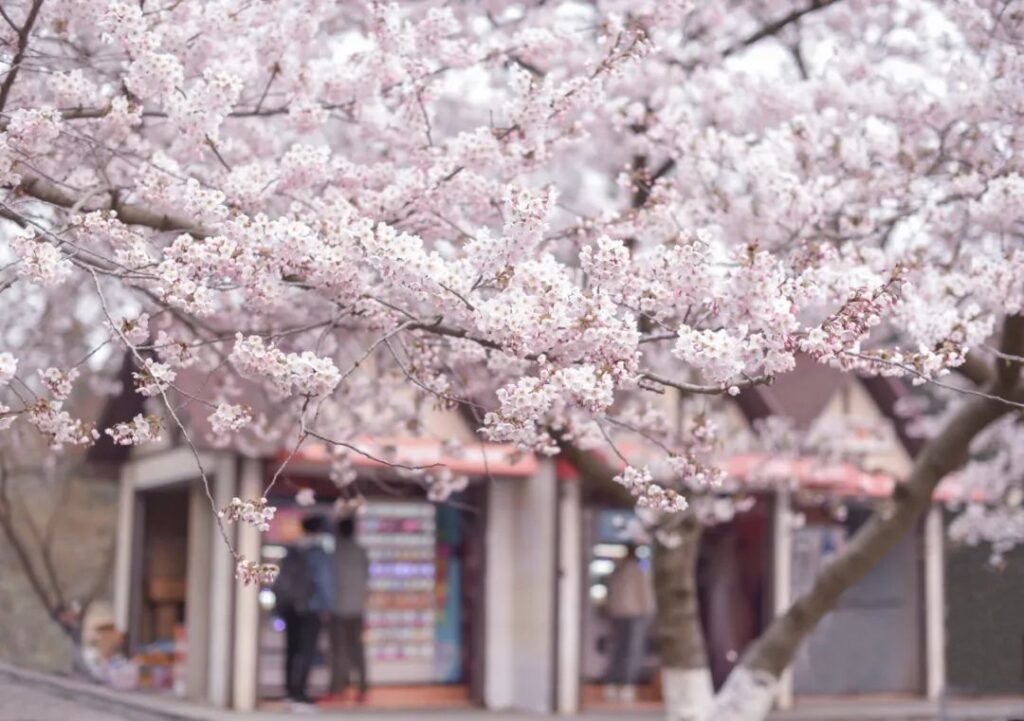
If you visit for the food:
From May to August, it’s the fishing moratorium period. From September to December, seafood is at its best. The grand opening of the Qingdao Beer Festival also takes place in August.

Where to stay in Qingdao?
It’s recommended to stay in the Shibei or Shinan districts of Qingdao, as most tourist attractions (except Laoshan and Jinsha Beach) are located in these two districts.
Staying here is undoubtedly the most convenient option for travelers.
Hotels such as Haijing Garden, St. Regis, Hyatt, Tian Hai, InterContinental, Shangri-La, and Westin are all located in this area.
If you frequently visit Qingdao, you can consider staying in Huangdao or Laoshan. Alternatively, you can stay in the city center for two nights and then spend another two nights in Huangdao or Laoshan.
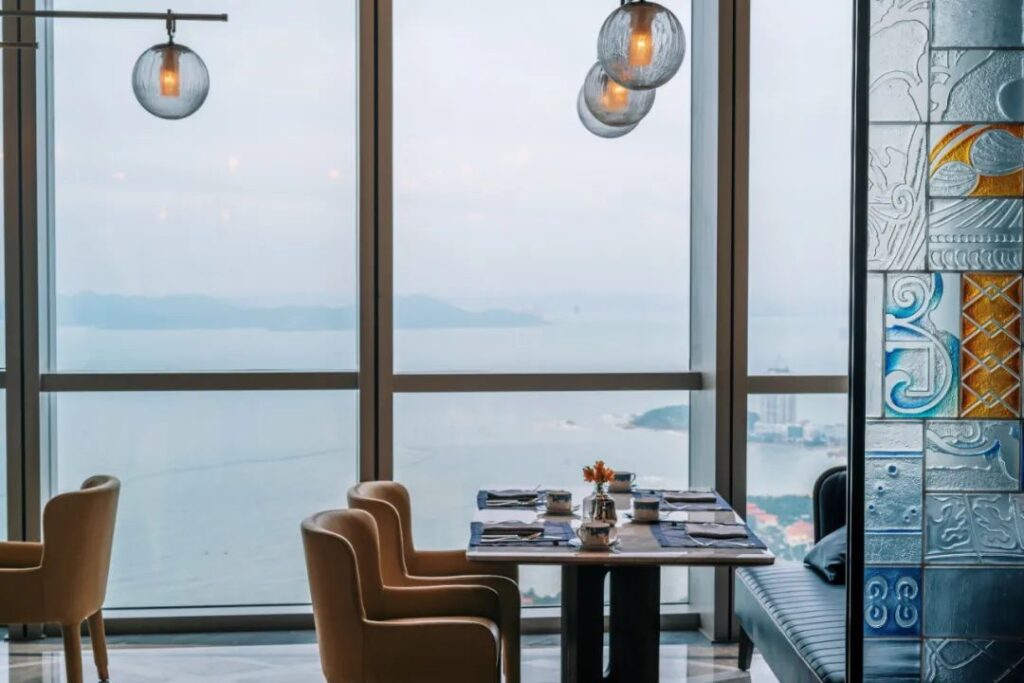
Qingdao hotels can be categorized by their rating:
- (The Eternal God): Qingdao Haijing Garden
- First-tier: St. Regis, Hanbilou
- Second-tier: Hyatt, Hai Tian, InterContinental, Jinsha Beach Hilton
- Third-tier: Laoshan Junlan, Jinsha Beach Westin, Downtown Westin, Shangri-La, Wyndham, Huiquan Dynasty
- State Guesthouse: Badaguan Guesthouse
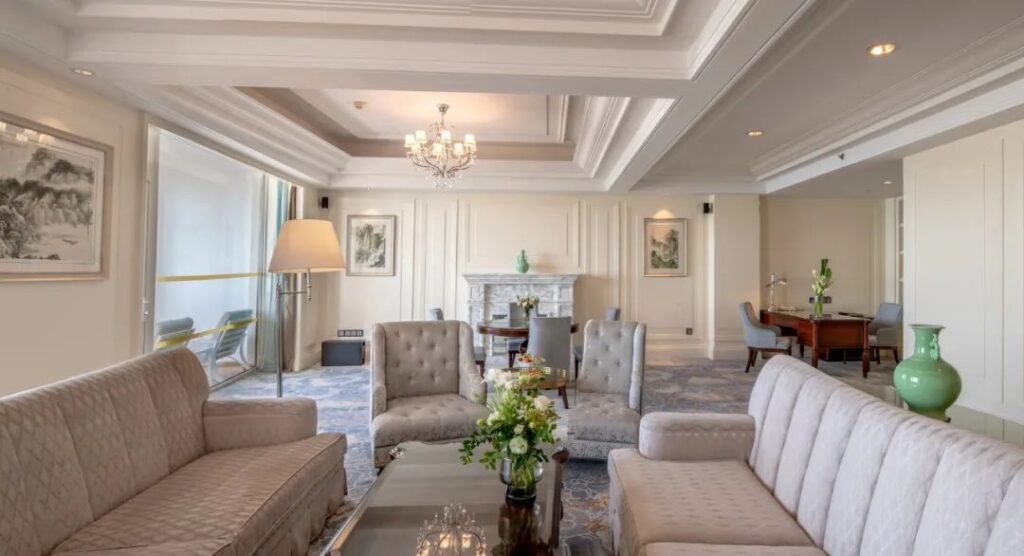
Haijing Garden
Qingdao Haijing Garden is undoubtedly the YYDS (The Eternal God) of Qingdao’s hotel industry.
During my recent trip to Qingdao, I stayed at Haijing Garden for two nights. I must say that if I visit Qingdao again, Haijing Garden will definitely be my first choice.
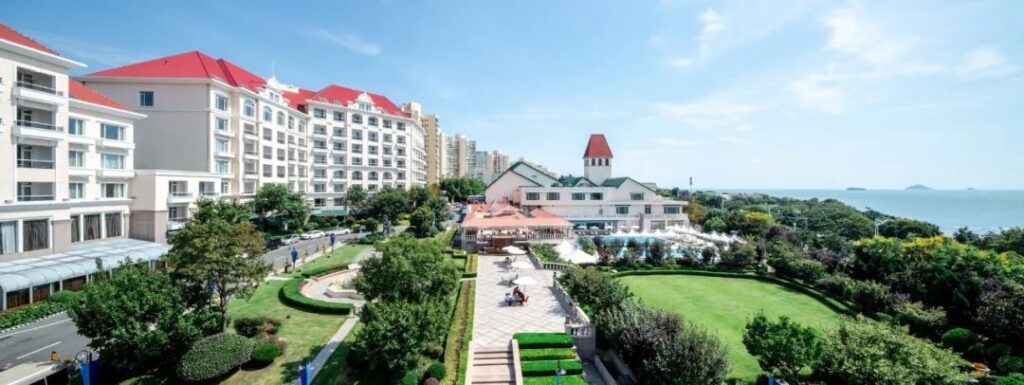
The service at Haijing Garden is exceptional, and it’s no exaggeration to say that it’s the best service I’ve ever experienced in a hotel.
St. Regis
St. Regis is the tallest and newest hotel in Qingdao. The rooms, pool, gym, and restaurants on the skyline are all the highest in Qingdao.
When staying at St. Regis, you don’t even need to climb Signal Hill or Little Fish Hill, as St. Regis is much higher than these two hills.
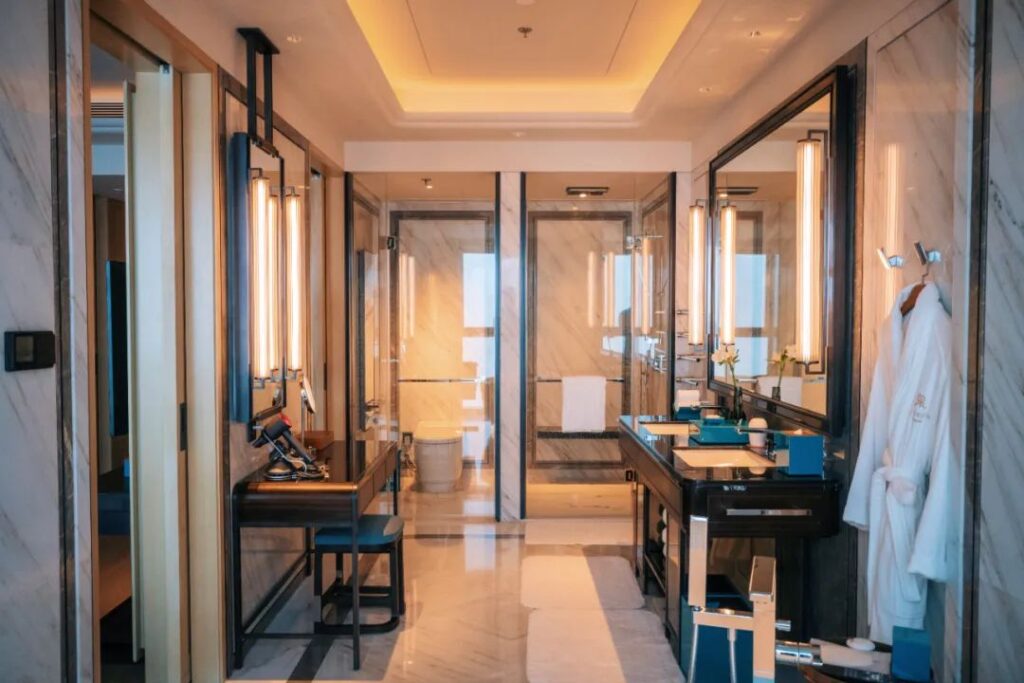
Hanbilou
There are only three Hanbilou hotels in China, located in Sun Moon Lake in Taiwan, Qingdao, and Nanjing. This Hanbilou was designed by Aman designer Kerry Hill, combining modern minimalism with Chinese elements.
It’s visually stunning and grand.
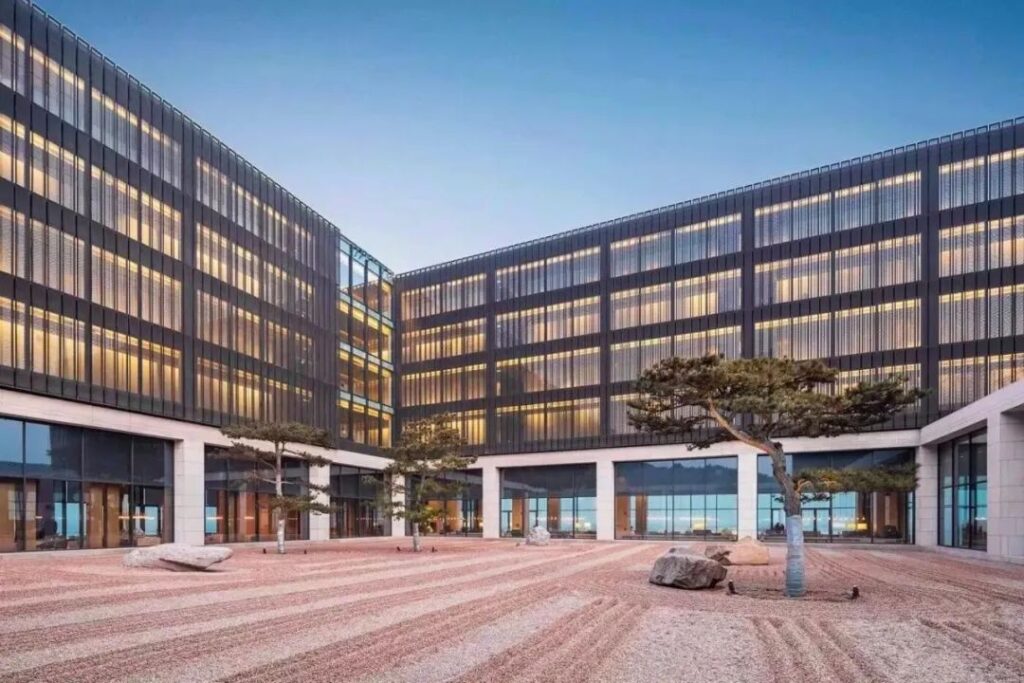
Hanbilou is the most expensive hotel in Qingdao, with all-suite rooms and hot springs.
The only downside is its location in Huangdao, making it more suitable for those who want to enjoy a staycation in Qingdao. For travelers, staying at Hanbilou and exploring downtown Qingdao can be a hassle.
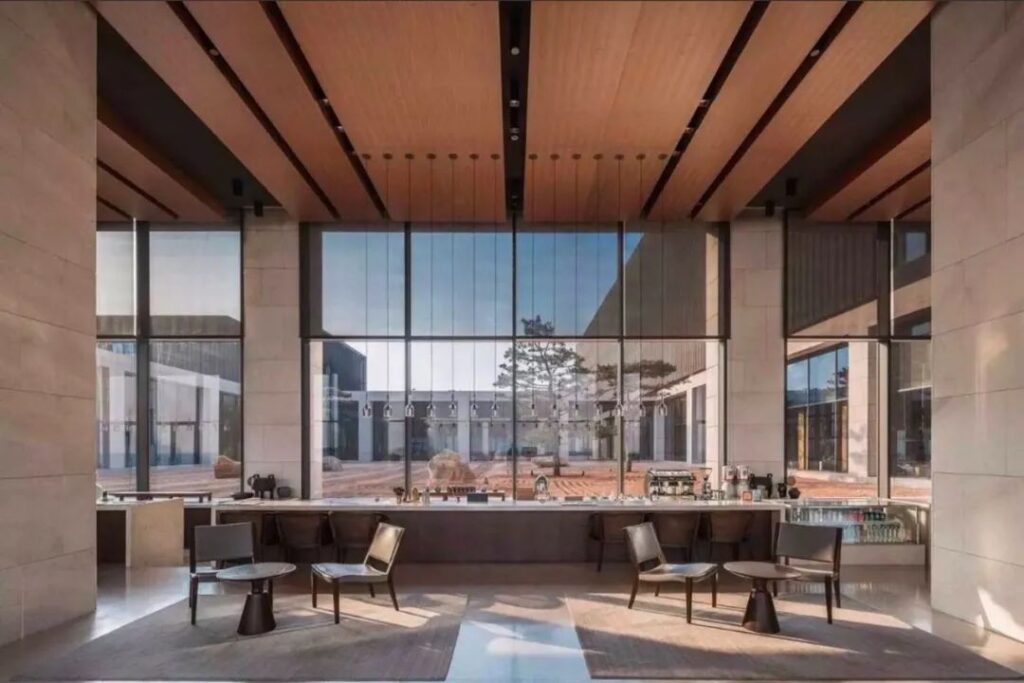
Hyatt
Hyatt is the only hotel in downtown Qingdao with a beach. Other hotels require crossing at least one road to reach the beach. Therefore, staying at Hyatt is very convenient for swimming at the beach.
Additionally, most rooms at this Hyatt offer sea views with stunning vistas.

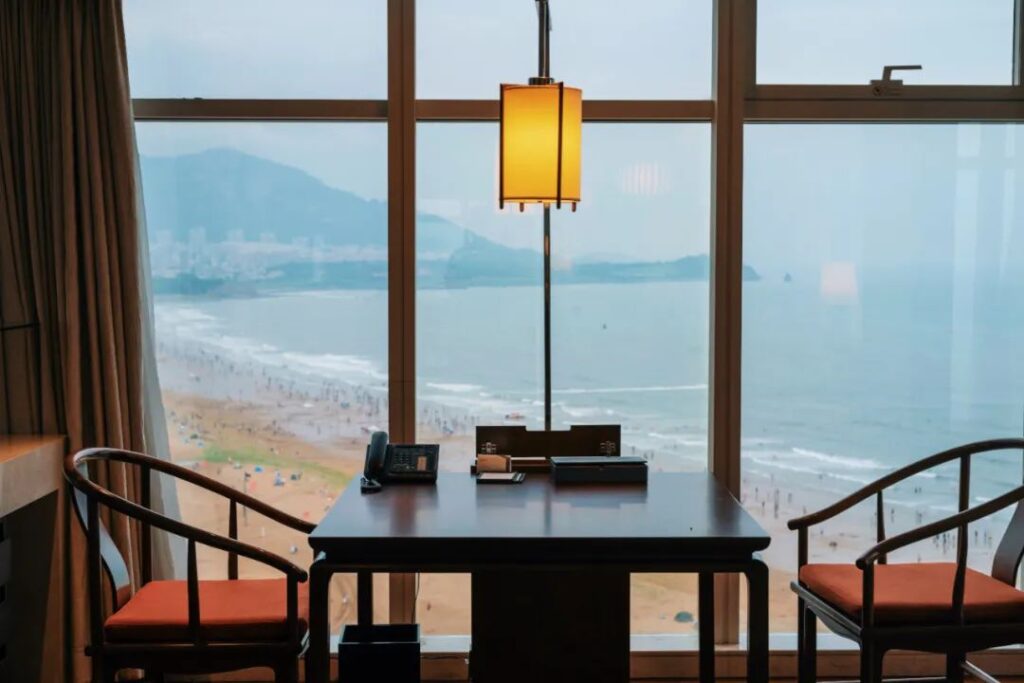
Another highlight is the dining. Donghai 88 is delicious and affordable (provided you have a dining card). Donghai 88 is one of the top-ranking restaurants among Hyatt’s dining options.
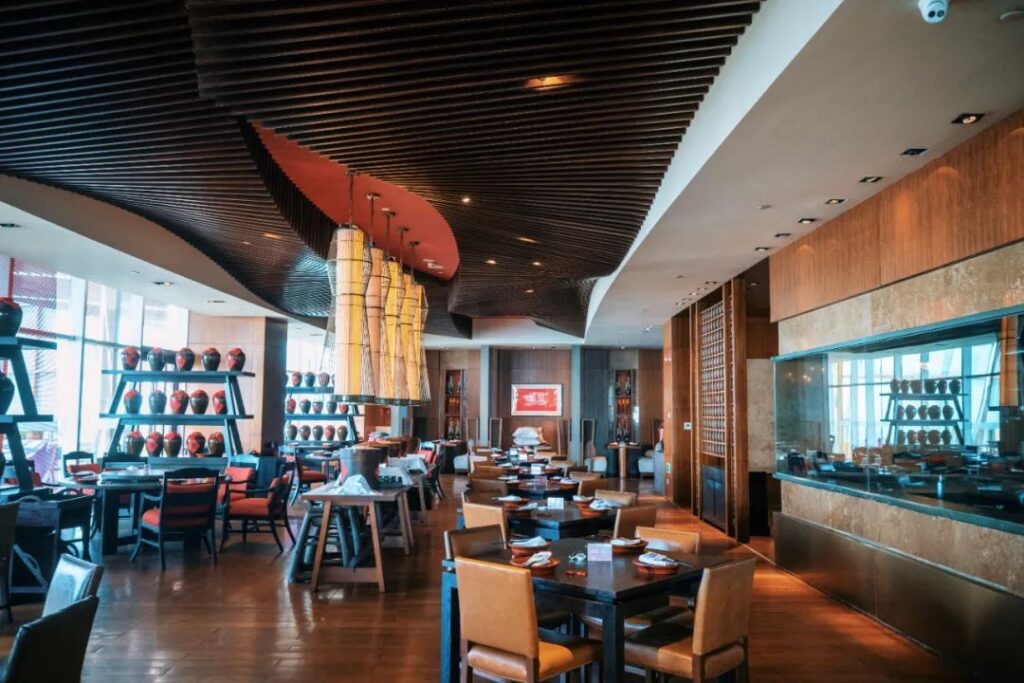
InterContinental
InterContinental is located at May Fourth Square and the Olympic Sailing Center. The Venu Sea View Bar on the top floor offers a great view, and you can directly watch the light show at May Fourth Square in the evening.
However, it’s a bit dated.

Hai Tian
Hai Tian is also a local hotel that opened this year, located right next to St. Regis (owned by the same proprietor). Surprisingly, Hai Tian was designed by CCD, which is quite astonishing.
The angle for viewing the sea from Hai Tian’s buffet restaurant is probably the best among all restaurants in Qingdao.
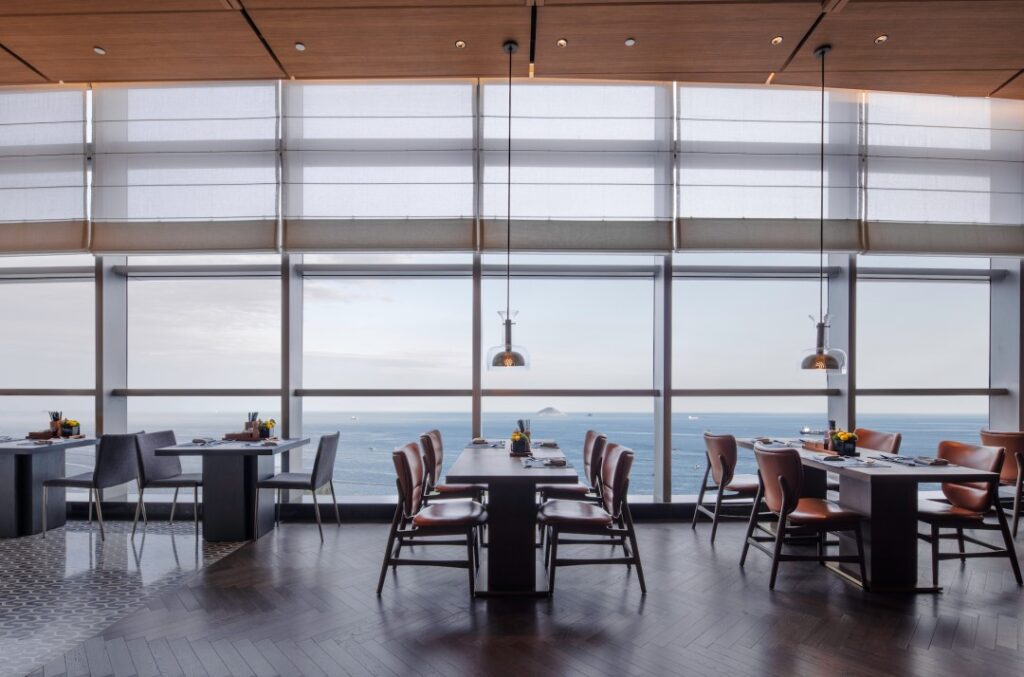
Moreover, Hai Tian is also a skyline hotel, with 80% of the rooms offering sea views, while the remaining rooms overlook Qingdao’s red roofs and green trees.
Since it was designed by CCD, the rooms are truly impressive.
Furthermore, Hai Tian has a hidden attribute: the front desk is the most generous when it comes to room upgrades.
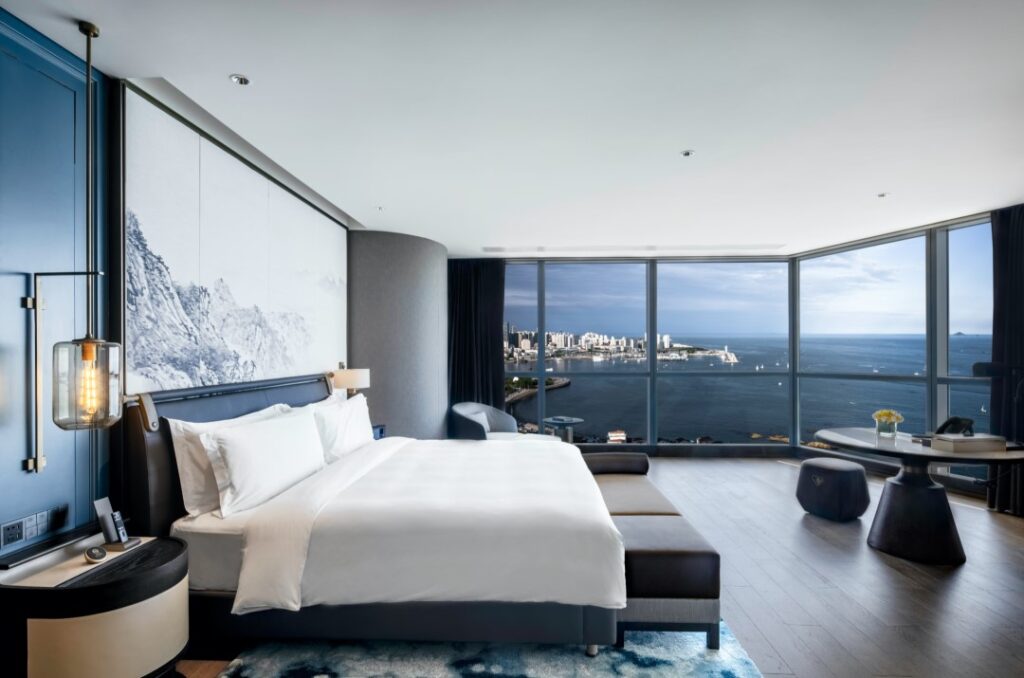
Huiquan Dynasty
It’s also an older hotel, but the location is truly excellent. It’s situated at Qingdao’s First Bathing Beach and is within a 1-kilometer radius of Little Fish Hill, Zhongshan Park, and Badaguan.
This hotel also has a revolving restaurant on the top floor, offering a panoramic view of the entire Huiquan Bay.
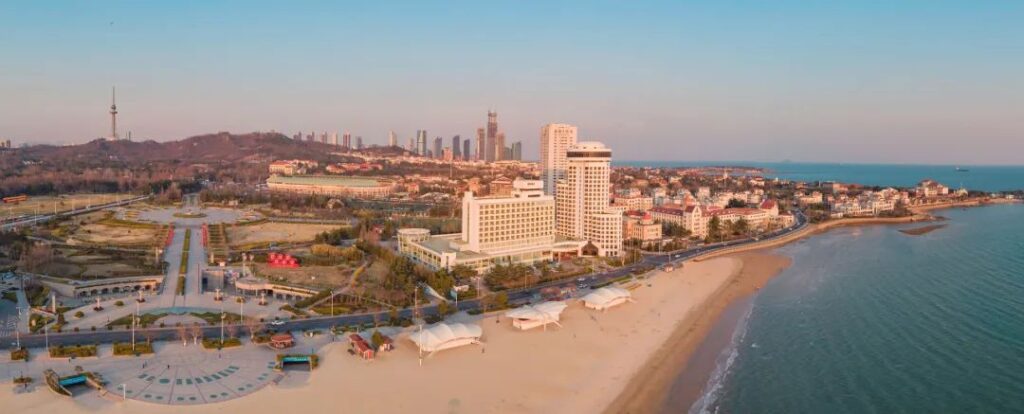
Other hotels like Shangri-La and Westin are also located in the city center, with good locations but slightly dated.
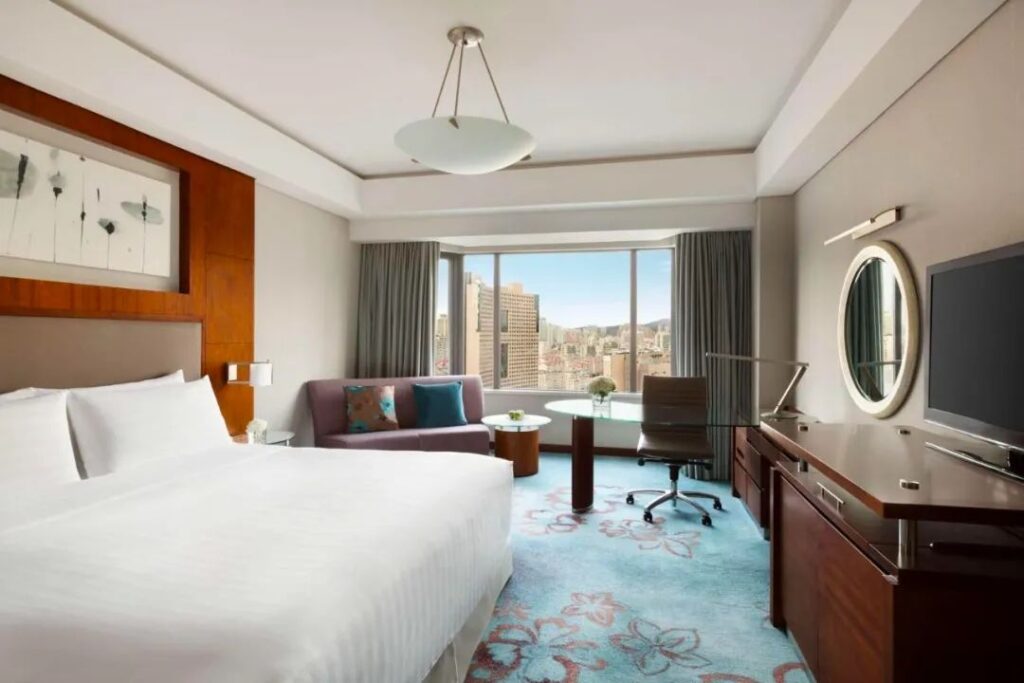
In Huangdao, apart from Hanbilou, there are also Jinsha Beach Hilton and Sheraton. In Laoshan, there is a Junlan hotel.
If you don’t want to make a day trip to Jinsha Beach or Laoshan, these hotels would be your choice for an overnight stay.
As for Jimo District, it’s not recommended for travelers to stay there. It’s a decent option for locals to go on vacation, but for out-of-towners, are you sure you’re traveling to Qingdao if you stay in Jimo District?
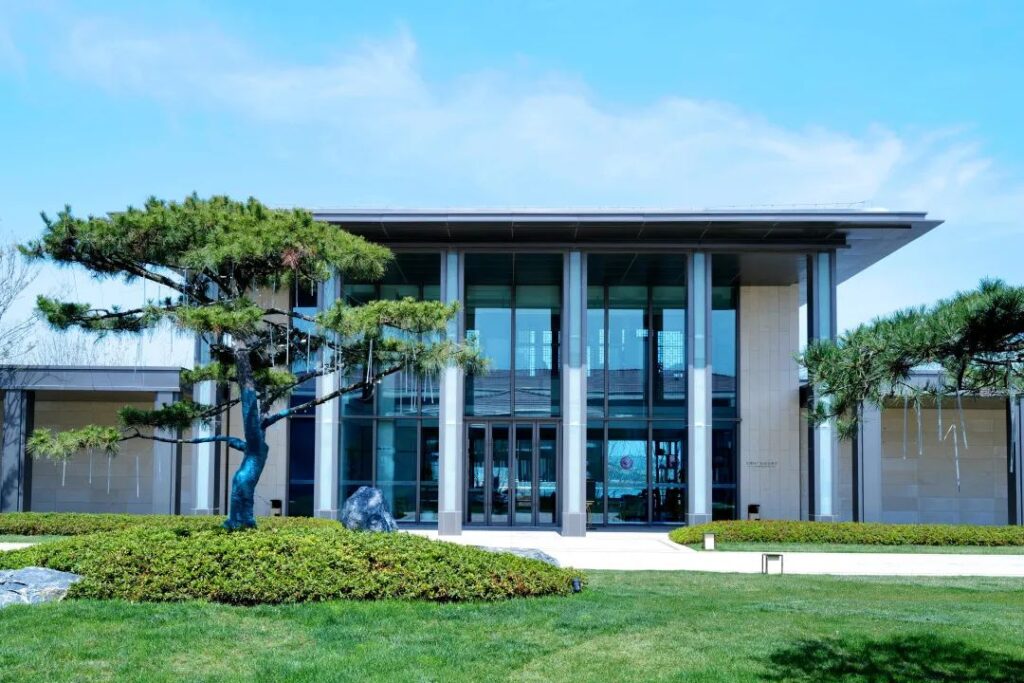
Some travel tips about Qingdao
In Qingdao, it’s advisable to use public transportation frequently. The Qingdao Metro is quite convenient for getting around. Most of the main attractions are located along Metro Lines 2 and 3.

There’s an app called Qingdao Metro, which is quite handy to use.

Self-driving is not recommended in downtown Qingdao (due to the abundance of one-way streets and limited parking), and cycling is even less advisable (due to the steep slopes in the old town). Taking the metro, bus, or taxi is actually quite convenient.

It’s sincerely recommended to visit Qingdao from April to June and from September to November. In July and August, it’s hot and expensive, making it unnecessary.
Once September arrives, hotel prices and round-trip airfares plummet. Moreover, September marks the start of the fishing season, and the seafood is delicious.
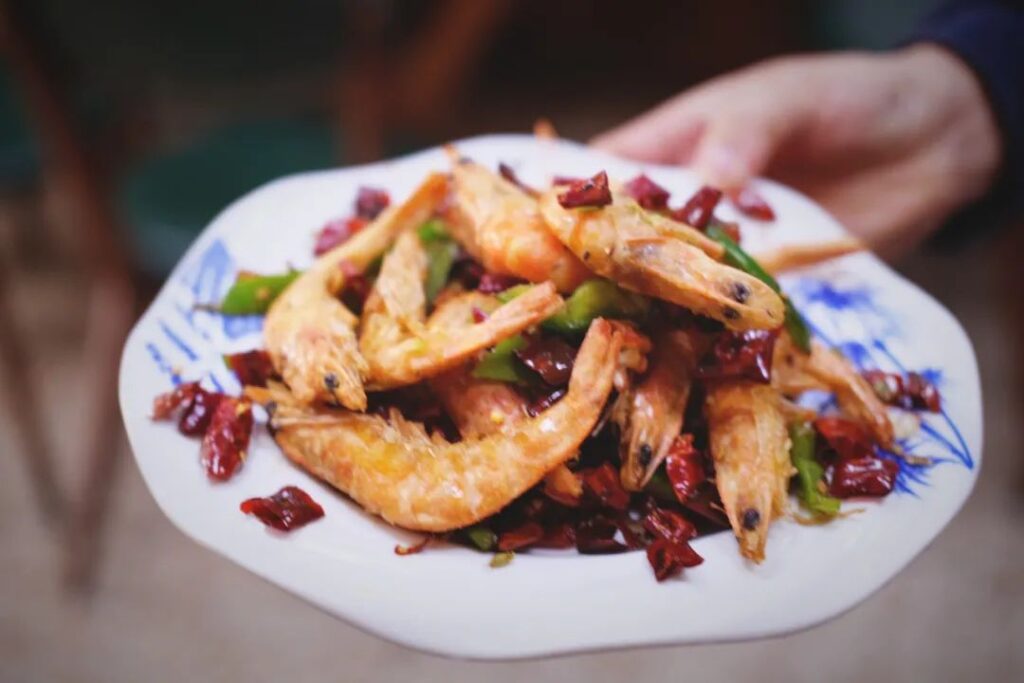
Recommended itinerary
Day 1: Experience the old town’s charm. Zhan Bridge – Little Qingdao – Catholic Church – Beer Museum – Badaguan – May Fourth Square – Olympic Sailing Center (for night views)
Day 2: Choose between Jinsha Beach or Laoshan. I recommend going to Laoshan, as it’s unique to Qingdao.
Day 3: Depending on your interests, those who enjoy arts and culture can visit Little Fish Hill, the Post and Telecommunications Museum, Qingdao Railway Station, and Rushi Bookstore; those interested in military history can visit the Naval Museum; and those who enjoy photography can visit Xiaomai Island and Yaner Island Park.
And don’t forget to eat and drink well every day.
